On the afternoon of July 8, continuing the first working day of the 20th Session of the 18th Thanh Hoa Provincial People's Council, Comrade Nguyen Quang Hai, Provincial Party Committee member, Vice Chairman of the Provincial People's Council presented the Provincial People's Council's Report on the results of monitoring the implementation of the National Target Program on New Rural Development (hereinafter referred to as the New Rural Development Program) from 2021 to 2023 in Thanh Hoa province. Thanh Hoa Newspaper introduces the full text of the report:

20th session, Thanh Hoa Provincial People's Council, term XVIII, 2021-2026.

Vice Chairman of the Provincial People's Council Nguyen Quang Hai presented the Report.
Part One
RESULTS OF IMPLEMENTING THE NEW RURAL REGIONAL REFORM PROGRAM IN THE PROVINCE FROM 2021 TO 2023
I. LEADERSHIP AND DIRECTION OF IMPLEMENTATION OF THE NEW COUNTRYSIDE REFORM PROGRAM
1. Organizing the dissemination and implementation of documents of the Central Government and Thanh Hoa province on the implementation of the New Rural Development Program
The Provincial People's Committee, provincial departments, branches and People's Committees at all levels have paid attention to the dissemination and implementation of documents of the Central Government and the province on the implementation of the New Rural Development Program, such as: Decision No. 263/QD-TTg dated February 22, 2022 approving the New Rural Development Program for the period 2021-2025, Decision No. 1689/QD-TTg dated October 11, 2021 on promulgating the Plan to implement Resolution 25/2021/QH15, Decision No. 35/QD-BCDCMTQG dated March 25, 2022 of the Head of the Central Steering Committee on promulgating the 2022 Work Program of the Central Steering Committee for National Target Programs for the period 2021-2025, Decrees, Resolutions of the Government and documents of the Central Government; Directive No. 09-CT/TU of the Provincial Party Committee on strengthening the leadership of Party committees at all levels in the Campaign "All people unite to build new rural areas and civilized urban areas in the period of 2021-2025"... The organization of dissemination and implementation is organized in many forms such as online from the Central to local levels, direct combined with online (directly at the province, online to district and commune levels); copying and sending documents combined with issuing documents requesting implementation, organizing thematic conferences integrating the dissemination and implementation of documents from higher levels. The organization of dissemination and implementation of documents from higher levels is basically carried out to ensure timeliness, quality and efficiency.
2. Issuing documents to direct, manage and guide implementation
Based on the documents of the Central Committee, Directive No. 09-CT/TU of the Provincial Party Committee on Strengthening the leadership of Party committees at all levels in the Campaign "All people unite to build new rural areas and civilized urban areas in the period of 2021-2025", Decision No. 622-QD/TU dated July 23, 2021 of the Provincial Party Committee on promulgating the Program for agricultural development and new rural construction in the period of 2021-2025; The Provincial People's Committee has submitted to the Provincial People's Council to issue 16 Resolutions to implement the New Rural Construction Program, including 2 Resolutions on mechanisms and policies to encourage new rural construction; 1 Resolution on the mechanism of integrating capital sources in the implementation of national target programs. The issued Resolutions ensure compliance with legal provisions, are timely, suitable to the situation in the province, and meet the objectives of the New Rural Construction Program.
The Provincial People's Committee has issued many documents to specify, direct and implement the New Rural Development Program, including: 46 decisions, 17 plans and many other specific documents.
The Office of Coordination for New Rural Construction, departments and branches, according to their assigned functions and tasks, have proactively issued documents guiding the implementation of each assigned New Rural Construction criterion.
The People's Council and People's Committee at district and commune levels have issued many documents to organize the implementation of the Program, including many resolutions of the People's Council approving programs and projects to support and encourage the New Rural Construction movement, which have effectively promoted the New Rural Construction movement in the area.
Basically, the mechanisms, policies, documents on leadership, direction, management and guidance for the implementation of the New Rural Program in the province have been fully issued, with many innovations, in line with practical requirements, creating conditions for localities to accelerate the progress of building new rural areas, improve the quality of criteria for building advanced new rural areas and model new rural areas in the period of 2021-2025 according to the set plan.
3. Propaganda and mobilization work
The propaganda and mobilization work to implement the New Rural Development Program has been widely deployed with many rich and effective forms; thereby, raising awareness for cadres, party members and people about the Agricultural Development Program and New Rural Development; focusing on improving the quality of emulation movements for New Rural Development and campaigns; promoting the role of the people and the community participating in New Rural Development, has been put into practice, thereby bringing about positive and clear changes to each village, hamlet and household. The propaganda and mobilization work for New Rural Development has been responded to and implemented synchronously, richly, effectively and substantially by the Fatherland Front and socio-political organizations at all levels with many movements such as: The model of residential areas "Bright - Green - Clean - Beautiful - Safe", residential areas "Self-management of food safety" of the Fatherland Front; the movement "Youth join hands to build new rural areas and civilized urban areas" of the Youth Union; The campaign "Building a family of 5 no's, 3 clean's", contributing to fostering Vietnamese family values" of the Women's Union; the movement "Veterans help each other reduce poverty, do good business" of the Veterans Association... The Provincial New Rural Development Program Coordination Office has presided over the editing and publishing of 32,400 copies/36 issues of photos and newsletters on New Rural Development; edited and published 1,000 Catalogs and 990 newsletters of OCOP products of Thanh Hoa province; coordinated with Thanh Hoa Newspaper to develop a propaganda topic with the theme "Reaching for higher values in quality for New Rural Development"; developed 4 propaganda reports broadcast on the Provincial Radio and Television Station; edited and updated hundreds of news, articles, videos, and reports posted on websites. The Steering Committees of National Target Programs from district to commune levels have focused on propagating the Party and State's policies and guidelines on implementing the New Rural Development Program to the people. Propaganda work has been widely deployed in many practical forms, with many articles and broadcasts promoting the construction of new rural areas. The district-level Department of Culture and Information directed the visual propaganda work of thousands of billboards, wall slogans, and propaganda paintings on new rural construction; political and social organizations launched the movement to join hands in building new rural areas to members, union members, and all classes of people. In propaganda, attention is paid to promoting typical examples of good practices, setting examples of organizations, individuals, and advanced models in production, participating in supporting new rural construction.

A corner of Quang Ninh commune (Quang Xuong). Photo: Document.
4. Establishment, consolidation and operation of the Steering Committee for the New Rural Development Program at all levels; organizational structure of agencies assisting the Steering Committee for the New Rural Development Program at all levels
The Standing Committee of the Provincial Party Committee issued Decision No. 404-QD/TU dated March 5, 2021 to establish the Steering Committee for the implementation of national target programs in Thanh Hoa province for the period 2021-2025, with the Secretary of the Provincial Party Committee as the Head of the Committee, the Chairman of the Provincial People's Committee and the Vice Chairman of the Provincial People's Committee as the Deputy Heads of the Committee; promptly complete the Steering Committee when there are changes in personnel. The Steering Committee for national target programs has issued Working Regulations, Decisions on assigning tasks to members of the Steering Committee; issued many documents to lead, direct and manage the New Rural Development Program for the period 2021-2025; organized conferences to review 2 years of implementing the national target program in the province, online conferences on national target programs for 11 mountainous districts, etc.
District and commune levels have established and consolidated the Steering Committees for the National Target Programs at the district and commune levels, 100% of the Steering Committees are headed by the Secretary of the Party Committee at the same level, creating unity and close coordination in the process of leading, directing and organizing the implementation of the programs between levels and sectors. The Steering Committees at the district and commune levels have made great efforts in leading, directing and managing the implementation of the programs, guiding the removal of difficulties and obstacles in the process of organization and implementation. To advise the Steering Committee for the implementation of the National Target Programs of the province, the Provincial People's Committee continues to maintain the operation of the Office for Coordinating the Provincial New Rural Development Program and regularly review and consolidate. Districts, towns and cities continue to maintain the Office for Coordinating the New Rural Development Program at the district level and commune-level New Rural Development officers to perform the task of advising on the organization and implementation of New Rural Development in the locality, ensuring the continuous and effective implementation of the program. In general, the steering and organizing apparatus for the implementation of the New Rural Construction Program from the provincial to the communal level has been established, consolidated, and put into effective and orderly operation. The coordination of the members of the Steering Committees at the provincial and district levels is relatively smooth, promoting the role of members in the Steering Committee. The Provincial Steering Committee for National Target Programs has organized a preliminary review of 2 years of implementing the New Rural Construction Program for the period 2021-2025 in Thanh Hoa province; a conference to evaluate the implementation of the New Rural Construction Program in 2023, and deploy tasks for 2024. The conferences are all associated with commending typical advanced models in the emulation movements for New Rural Construction, especially the movement of donating land to build new rural roads; the conference not only honors advanced collectives and individuals but also has the effect of propagating and spreading the emulation movement widely in all localities of the province.
5. Guidance, inspection and supervision
Members of the Provincial Steering Committee for the Program, according to their assigned tasks, have regularly followed up with localities to direct, inspect, and urge localities to organize the implementation of the Program; promptly reported and advised the Steering Committee to remove difficulties and obstacles arising in the implementation process to ensure progress according to the Plan. The Provincial People's Committee has assigned departments, branches, and sectors, according to their functions and tasks, to develop plans to direct and guide the implementation of NTM criteria at all 3 levels (meeting NTM standards, advanced NTM, and model NTM) for the period and each year in the specialized fields of the sector within the province. Departments, branches, and sectors, according to their functions and tasks, have developed plans to direct and guide the implementation of NTM criteria at all levels for the whole period and each year for districts, towns, and cities; At the same time, organize inspection, appraisal, assessment, and determination of the level of completion of NTM criteria at levels within the industry's professional fields according to regulations, as a basis for proposing consideration and recognition of NTM, advanced NTM, and model NTM standards for qualified localities.
The Provincial Office of the New Rural Development Program has issued 52 documents guiding and urging localities to continue to focus on directing, organizing the implementation, maintaining and improving the quality of the achieved new rural criteria to ensure sustainability as required; developing and organizing the implementation of annual inspection plans on the implementation of the new rural development program in localities. The work of guiding and inspecting the implementation of the goals and indicators of the new rural development program has been carried out periodically and regularly by localities; thereby, promptly grasping the progress, difficulties and obstacles in the implementation process to have orientations and solutions to remove them. In the process of organizing the implementation of the Program, members of the District Steering Committee regularly guide, direct, inspect and urge promptly on the basis of the phase and annual plans. At the same time, promote democracy in implementing policies and projects of the program so that people know, discuss, do, inspect, supervise, and benefit.
II. RESULTS OF IMPLEMENTING THE NEW RURAL REGIONAL REGION PROGRAM IN THE PROVINCE IN THE PERIOD 2021-2023
1. Implementation of the National Criteria for New Rural Areas in the 2021-2025 period
Based on the national criteria sets for new rural areas at all levels (standard, advanced, model) for the period 2021-2025 decided by the Prime Minister, to unify implementation in the province, based on the actual situation, on August 10, 2022, the Provincial People's Committee issued specific criteria sets for the period 2022-2025 under its authority, including: New rural commune criteria set in Decision No. 32/2022/QD-UBND; Advanced new rural commune criteria set in Decision No. 33/2022/QD-UBND; Advanced new rural district criteria set in Decision No. 31/2022/QD-UBND; Smart village criteria and model new rural commune criteria according to the most outstanding fields in Decision No. 35/2022/QD-UBND. At the same time, promulgate the Regulation on criteria, conditions, order, procedures, records for consideration, recognition, announcement and revocation of decisions on recognition of villages and hamlets meeting NTM standards and model NTM standards in the province, period 2022-2025 in Decision No. 41/2022/QD-UBND dated September 5, 2022.
2. Results of implementing the New Rural Criteria Set for the period 2021-2025
2.1. Commune level
- Criterion No. 1 on planning: Regarding the general planning of communes: The whole province has 344 communes that must establish a general planning of communes, and 125 communes are oriented for urban development; 298/344 communes have had their general planning of communes approved, reaching 86.6%. Of which: The rate of approved general planning of communes in mountainous districts is 110/153, reaching 71.9%; the rate of approved general planning of communes in lowland districts is 188/191, reaching 98.4%. The number of communes that have not had their general planning of communes approved is 46, accounting for 13.4%; including 43 communes in 5 mountainous districts; 3 lowland communes. There are 2 mountainous districts that have not had their general planning of communes approved, mainly due to limited resources, so implementation is slow.
- Criterion No. 2 on traffic: 402 communes (86.5%) met the Traffic criteria; an increase of 1.1% compared to the end of 2020.
In the period of 2021-2023, localities have invested in building new, upgrading and renovating over 4,583 km of rural roads; 1,368 km of intra-field roads; the movement of donating land to open rural roads has been supported and agreed by the people. The width of the roads and road surfaces basically meet the prescribed standards. Communes regularly mobilize people and mass organizations to participate in the movement of cleaning the roads; mobilize people to remove violations of traffic safety corridors on roadsides, sidewalks and curbs; relocate electric poles after road expansion; mobilize people to plant shade trees and flowers along the roadsides to create a landscape for residential areas; maintenance work is carried out regularly.
- Criterion No. 3 on irrigation and natural disaster prevention and control: 456 communes (98.1%) met the criteria for irrigation and natural disaster prevention and control; an increase of 2.3% compared to the end of 2020. Districts are interested in investing, renovating and repairing key works, internal irrigation works, upgrading and repairing culverts, river dykes and sea dykes. The rate of solidification of irrigation works has been increased, meeting the requirements of natural disaster prevention and control, ensuring sustainability and adapting to climate change. Communes with dykes have done a good job of managing dykes and handling violations according to regulations, thereby reducing violations of the law on dykes.
- Criterion No. 4 on electricity: 462 communes (99.4%) met the electricity criteria; an increase of 2.9% compared to the end of 2020. Every year, the power grid system in the province is always invested in, renovated and upgraded by electricity business management organizations to ensure technical requirements, meeting the living and production needs of the people. The system of medium-voltage, low-voltage power works and transformer stations ensures synchronization, technical parameters, and electrical safety meet the prescribed standards. In 3 years (2021-2023), the total investment capital for renovating the power grid in the province reached about 2,460 billion VND; many districts and communes have done a good job in building new and renovating the power grid. There are 454/465 communes that have met criterion 4.2 on "the rate of households directly registered and using electricity regularly and safely from sources", ensuring compliance with the guidance of the Ministry of Industry and Trade in Decision No. 4293/QD-BCT dated October 28, 2016 and Decision No. 2332/QD-BCT dated November 7, 2022. There are 3 communes that have not met criterion 4 on electricity.
- Criterion No. 5 on schools: 421 communes (90.5%) met the School criteria; an increase of 9.6% compared to the end of 2020. In the past time, districts and communes have made great efforts to ensure that facilities meet standards for kindergartens, primary schools, junior high schools, high schools, multi-level general schools, vocational education centers - continuing education to meet standards according to regulations of the Ministry of Education and Training. Many districts have invested in and upgraded the school system in the district to be relatively complete, synchronous, and spacious. However, in some communes, investment resources are still limited, so they have not met the actual needs and regulations of the Ministry of Education and Training: The rate of temporary classrooms is still high, the rate of subject classrooms is still low, the number of equipment provided to implement the 2018 General Education Program in primary and secondary schools is still limited. Many localities face financial difficulties in building facilities and teaching equipment that meet national standards to complete criterion number 5 on schools. Investment in building schools that meet national standards is still scattered, so the percentage of communes that meet this criterion is not high.
- Criterion No. 6 on cultural facilities: 377 communes (81.1%) met the criteria for Cultural Facilities; down 0.9% compared to the end of 2020. To implement criterion No. 6, the Provincial People's Committee issued Decision No. 4794/QD-UBND dated December 31, 2022 approving the Project "Building and developing grassroots cultural and sports institutions in the province by 2030", Plan No. 151/KHUBND dated June 6, 2023 to implement the Project "Building and developing grassroots cultural and sports institutions in the province for the period 2023 - 2025". In the period of 2021-2023, the province has invested in building and completing 3 district-level Cultural - Sports Centers, 88 commune-level Cultural - Sports Centers, 279 Cultural Houses, Sports areas in villages, hamlets and neighborhoods; up to now, the whole province has 20/27 districts, towns and cities with District-level Cultural - Sports Centers (of which 13 Centers meet the standards according to the regulations of the Ministry of Culture, Sports and Tourism), 442/465 communes have cultural and sports facilities (including Multi-purpose Halls and Commune Cultural - Sports Centers), 3,698/3,835 villages and hamlets have Cultural Houses - Sports areas in villages and hamlets.
However, the facilities and equipment inside the cultural and sports institutions at the commune and village levels are mainly contributed and purchased by the people, so they are not uniform and do not meet the needs of organizing community activities of the people. In some localities, after being recognized as NTM, the maintenance and improvement of the quality of cultural facilities have not received due attention, and the results achieved are still limited.
- Criterion No. 7 on rural trade infrastructure: 433 communes (93.1%) met the criteria for rural trade infrastructure; an increase of 2.6% compared to the end of 2020. Rural trade infrastructure in the province has undergone many changes in recent times; facilities have been increasingly improved, meeting the needs of people for buying and selling and exchanging goods; investment in building facilities, improving management capacity, business, and exploitation of trade infrastructure has had the active participation of the private economic sector (enterprises, cooperatives, individual business households). In the period of 2021-2023, localities have mobilized more than 58 billion VND; In which, the district and commune budget capital is about 50 billion VND to invest in new construction, upgrading, renovating markets and purchasing equipment, training, providing knowledge on food safety, fire prevention and fighting... for market management units, business households in the market; capital from individual households to invest in renovating retail stores to meet the prescribed criteria is about 8 billion VND.
- Criterion No. 8 on information and communication: 454 communes (97.6%) met the Information and Communication criteria; down 0.3% compared to the end of 2020. The telecommunications network continues to be invested in, expanding coverage with modern technology to meet the needs of socio-economic development and people's needs, especially in rural and mountainous areas of the province, contributing to improving services and promoting the transformation process of the province. IT infrastructure in state agencies continues to be invested in, supplemented and upgraded to serve the management, direction and operation in the network environment and carry out the digital transformation tasks of the province. As a result, 465/465 communes have at least 01 communal cultural post office, with a service radius of less than 3 km, meeting the standards on premises, equipment, service and provision of postal services according to regulations of the Ministry of Information and Communications; 465/465 communes in the province have radio stations and loudspeaker systems to villages to propagate the Party's guidelines and policies, the State's policies and laws, political events, and local socio-economic development activities; 465/465 communes have a ratio of online settlement records to the total number of administrative procedure settlement records of the commune exceeding the regulations.
- Criterion No. 9 on residential housing: 416 communes (89.5%) meet the criteria on Residential Housing; a decrease of 1.5% compared to the end of 2020. Many households' houses have been newly built, upgraded, renovated, reducing the rate of temporary and dilapidated houses. The architecture of the houses of the households is basically consistent with the traditions and customs of the people, ensuring traditional features combined with modern architecture, creating clean and beautiful residential areas. The landscape of the residential areas and residential areas is basically neat, clean and beautiful. However, the rate of households living in semi-permanent houses using materials with low life expectancy and degraded houses in some communes in mountainous districts is still relatively high; in addition, some households (mainly in mountainous areas) do not have the conditions to renovate their houses due to their economic conditions.
- Criterion No. 10 on income: 390 communes (83.9%) met the income criteria; an increase of 3.6% compared to the end of 2020. Identifying income as an important criterion in new rural construction, in recent years, localities have implemented many programs, projects, and policies to prioritize capital sources for infrastructure investment, production models, loan support... to create conditions to increase income for people (Tho Xuan, Thieu Hoa, Yen Dinh districts...). However, there are still 75 communes that have not met the income criteria, especially communes in remote, isolated, and extremely difficult areas. There are still 3 districts that have not met any criteria, and some districts have a low number of communes meeting the criteria.
- Criterion No. 11 on multidimensional poverty: 359 communes (77.2%) met the criteria for multidimensional poverty; a decrease of 11.5% compared to the end of 2020. This is determined to be the basis for measuring and monitoring the level of income shortage and access to basic social services of the people; is the basis for identifying subjects to implement poverty reduction and social security policies and planning other socio-economic policies; provincial departments and branches have proactively developed plans, organized direction, guidance, inspection and urging the implementation of reviewing poor and near-poor households according to assigned areas; localities continue to strengthen direction and synchronous implementation of solutions to promote production development, create jobs and increase income for people; many districts have 100% of communes completed. In addition, 106 communes have not met the criteria; 3 districts have no communes meeting the criteria; Some districts have many communes that have not met the standards.
- Criterion No. 12 for labor: 392 communes (84.3%) meet labor criteria; decreased by 15.7% compared to the end of 2020. Labor and employment have a great influence on the quality and effectiveness of the NTM construction program, directly impacting on improving the quality of life for rural people. In the period 2021-2023, the work of job creation and social security was concerned; In 3 years 2021-2023, the whole province created new jobs for over 185,000 workers, of which more than 26,000 workers went to work abroad under contracts; The labor structure shifted in a positive way, the percentage of workers working in agriculture, forestry and fishery decreased sharply to 31.1% in 2023.
- Criterion No. 13 on organizing production and development of rural economic: Up to now, 404 communes (86.9%) have achieved criteria for organizing production and development of rural economy; decreased by 8.1% compared to the end of 2020. The economic restructuring, agricultural production structure towards developing high economic efficiency commodity production in the province has been concerned, forming production links and product consumption with an area of 82,000 ha; Establishing many models of agricultural and rural tourism, such as: Linh Ky Moc ecological farm, Thanh Tam bamboo ecological park, Anh Duong farm, Yen Trung tourism village ... The models of agricultural production are concentrated in the direction of organic and high technology combined with tourism to attract a large number of tourists to visit and buy agricultural products. The conversion of low-efficient rice cultivation land to higher value crops has many positive changes, in the period of 2021-2023, has converted 2,458.9 ha. Put into production a high -value crop and has been exported. The consolidation and development of cooperatives are interested in implementing; By the end of 2023, there were 1,192 cooperative groups operating in the field of agriculture - forestry - fishermen and matches with more than 12,635 members; There are 815 agricultural cooperatives with 62,100 members, of which 598 agricultural cooperatives are operating effectively (mainly concentrated in communes that have reached NTM standards). Cooperatives and cooperative groups have been more effective in land, labor, supplies and capital, access to scientific and technical advanced information; contributing to meeting production development requirements, effectively exploiting and using land resources, local labor and contributing to changing farming practices, promoting economic restructuring towards commodity production. The OCOP program is drastically and effectively implemented; By December 31, 2023, the whole province had 496 OCOP products recognized, including 1 5 -star product, 57 4 -star products, 438 3 -star products. 94 communes have not yet reached criteria No. 12, especially in mountainous districts, the number of communes reaches criteria 12 is still low.
- Criterion No. 14 on education and training: 457 communes (98.3%) meet the criteria of education and training; an increase of 1.8% compared to the end of 2020. The localities have been interested in, focusing on building, repairing and supplementing facilities and teaching equipment at schools in the direction of national standards, in order to meet the requirements of educational innovation, contributing to improving the quality of comprehensive education. The universalization of education at all levels in the province shall inspect, evaluate and recognize according to the plan. In 2023, 100% of communes, wards and townships of 27 districts, towns and cities achieved universal education for 5 -year -old children; Primary education universalization reaches level 3; Universalization of lower secondary education reach level 2; Delete illiteracy reaches level 2. The rate of junior high school graduates continues high school (high school, complementary, vocational training) reaches 90.34%. The proportion of schools meeting national standards, meeting the standards of facilities is 84.79%. However, socialization in investing in facilities and teaching equipment for educational institutions is still limited and effective.
- Criterion No. 15 on health: There are 412 communes (86.6%) to meet health criteria; decreased by 7.8% compared to the end of 2020. Preventive health and initial health care for people continues to be concerned; Strengthen the prevention and control of CIVI-19 epidemics and other diseases not to arise into outbreaks, spreading to the community. Health facilities continue to improve the quality and application of new techniques in medical examination and treatment, health care for the people. People have basic medical services that are easier, quality, time -saving and cost -saving; Deploying the medical examination and treatment model of health insurance by citizenship identity -attached and applied VNEID; Up to now, 100% of communal, ward and town health stations have conducted medical examination and treatment with health insurance. The whole province was until December 31, 2023, the health insurance coverage was 91.95%. Besides the achieved results, the quality of commune medical services has not met the requirements; facilities and equipment at the commune health station are limited, the minimum equipment of some health stations is still lacking; Human resources of the health station are still lacking, especially doctors, midwives, pharmacists, traditional medicine. Most communes, wards and townships do not have a force of village health workers, so the implementation of preventive medicine, health and population in the community still faces many difficulties.
- Criterion No. 16 cultural: 450 communes (96.8%) meet cultural criteria; increased by 2.9% compared to the end of 2020. Implementing Decision No. 696-QD/TU dated September 9, 2021 of the Provincial Party Executive Committee approving the Cultural Quality Program for the period 2021-2025; In recent years, cultural activities, physical training, sports, conservation, embellishment and promotion of the value of monuments are interested in implementing. The movement of the entire people unite to build a cultural life associated with the vocational training and the movement of building a commune meeting the cultural standard of NTM to continue to be implemented; Improving the quality of construction and recognition of the title of cultural family, cultural residential areas, associating the Soviets with conservation and promotion of cultural heritage values, preserving good customs and cultural traditions of ethnic groups and localities in the province. The percentage of population participating in regular exercise and sports, the number of families recognized as the title of cultural family and cultural residential areas increased, traditional festivals are organized in accordance with regulations. The preservation and promotion of traditional cultural values has been strongly developed, many folk arts clubs, poetry clubs, rowing, classical, folk songs, and people are formed effectively, enhanced and enriched the cultural life of the people.
- Criterion No. 17 on environmental and food safety: There are 277 communes (59.6%) to meet the criteria of environmental and food safety; decreased by 20.9% compared to the end of 2020. Environmental protection and construction of bright - green - clean landscapes were directed by all sectors and localities. The awareness of environmental protection of people has been in order, paying attention to the collection and treatment of waste, improving the environmental landscape, planting flowers, trees along the two sides of the road, in residential areas, building drainage ditches ... Many models of environmental protection are maintained and increasingly replicated.
The percentage of households using clean water of some districts increased. This is a difficult and difficult criterion of the communes of the communications of vocational training, 277 communes reached and down 20.9% compared to 2020; There are 4 districts that do not have any communes that meet this criterion (because they have not reached the target of 17.1 on the proportion of households using clean water according to standards); Many districts are very low (because there is no clean water factory, or there is but the coverage is not all over the communes and towns). Therefore, some communes have been recognized as meeting NTM standards in the period of 2013-2020, reviewed according to the set of criteria 2021-2025, and does not meet the criterion No. 17.
- Criterion No. 18 on the political system and access to the law: 452 communes (97.2%) meet the criteria of the political system and access to the law; an increase of 0.6% compared to the end of 2020. The Party committees at all levels have organized thoroughly, strictly and promptly implemented resolutions, directives and conclusions of the Party, creating a high uniformity of awareness and implementation in the entire provincial Party Committee. The localities continue to improve the quality of commune -level cadres and civil servants and have made significant changes, the quality has been raised.
- Criterion No. 19 on defense and security: 462 communes (99.4%) meet the criteria for national defense and security; decreased by 0.2% compared to the end of 2020. District police have synchronously implemented the movement "All people protect national security". The whole province has 398 communes and towns removed from the key and complicated security. There are many models of the entire people's movement to protect the national security, including operating models that bring efficiency to contribute to ensuring security in rural areas, such as surveillance cameras associated with the security of security that has been replicated. The militia forces continued to be built strongly and widely, fulfilling the assigned military and defense indicators; contributing to building the national defense, the national defense posture associated with the people's security, the people's security posture; Actively build a strong and comprehensive rural area, ensuring maintaining military and defense criteria in vocational training.
Through the data on the results of implementing the goals according to the set of NTM criteria for the period of 2021-2025, showing: There are 8 criteria increased compared to 2020. The cause of increasing criteria is because new communes meet NTM standards for the period 2021-2023. There are 11 criteria decreased compared to 2020. The cause of the decrease in the following criteria: due to the NTM commune criteria for the period 2021-2025, there are more targets than the criteria of the period 2016-2020, increasing from 49 targets to 57 criteria/19 criteria. Many criteria of the standard level of each indicator are also higher as: the proportion of households using clean water from centralized water supply; The percentage of trained labor with qualifications and certificates; issuing codes of planting areas, traceability of key products of the commune and certified VietGAP; the proportion of people with electronic medical examination and treatment books and the use of remote medical examination and treatment applications; Attaching address code of agencies, organizations, individuals and households on the basis of national digital map; multi -dimensional poverty ratio ... In addition, in the new set of criteria, there are some indicators that the previous period did not have. In addition, some localities after being recognized NTM, the maintenance and improvement of the quality of criteria has not been paid enough attention.

Cultural house of Da Nam village, Yen Phu commune (Yen Dinh). Documentary photo
2.2. District level
Implementing the Prime Minister's Decision No. 320/QD-TTg of March 8, 2022, promulgating the set of national criteria on NTM district; stipulating towns and cities under the provincial level to complete the task of building new rural areas and the national set of criteria for NTM district to improve the period 2021-2025; Through review and evaluation of the Provincial NTM Construction Program Coordination Office, the results of the 23 districts as follows:
- Criterion No. 1 on planning: There are 23/23 districts (100%) meeting the planning criteria; an increase of 69.6% compared to the end of 2020.
- Criterion No. 2 on transportation: 14/23 districts (60.9%) meets traffic criteria; decreased by 8.7% compared to the end of 2020.
- Criterion No. 3 on irrigation and natural disaster prevention: There are 22/23 districts (95.7%) to meet the criteria for irrigation and natural disaster prevention and control; an increase of 21.7% compared to the end of 2020.
- Criterion No. 4 on electricity: There are 21/23 districts (91.3%) meeting the criteria of electricity; increased by 4.3% compared to the end of 2020.
- Criterion No. 5 on health - culture - education: There are 9/23 districts (39.1%) meeting criteria for health - culture - education; Retain compared to the end of 2020.
- Criterion No. 6 on economics: 11/23 districts (47.8%) meet economic criteria; decreased by 30.4% compared to the end of 2020.
- Criterion No. 7 on environment: 8/23 districts (34.8%) meet environmental criteria; 4.3% decrease compared to the end of 2020.
- Criterion No. 8 on the quality of living environment: There are 8/23 districts (34.8%) meeting the criteria of the quality of the living environment; decreased by 65.2% compared to the end of 2020.
- Criterion No. 9 on the political - security and public security system: 17/23 districts (73.9%) meet the criteria of political system - security and public administration; decreased by 26.1% compared to the end of 2020.
Thus, 4/23 districts reached 9/9 criteria; There are 2/23 districts reaching 7/9 criteria; There are 2/23 districts reaching 6/9 criteria; There are 1/23 district reaching 5/9 criteria; 6/23 districts reached 4/9 criteria; There are 5/23 districts reaching 3/9 criteria compared to the NTM district criteria set for the period of 2021 - 2025. There are criteria that increase compared to 2020, such as: criterion No. 1 on planning increases by 69.6%, but also has a deep decrease criterion, such as: criterion No. 8 on the quality of the living environment decreased by 65.2%. There are criteria in many districts that are not achieved such as: Criterion No. 7 on environment, criterion No. 8 on the quality of living environment, criterion No. 5 on health - culture - education.
The cause has not met the criteria of NTM district in the period of 2021-2025: Compared to the 2016 -2020 criteria, the period of 2021-2025, there are many difficult criteria, it takes a lot of time and resources to be able to implement. Specifically, a number of criteria such as: Criterion No. 2 on transportation has more targets on the ratio of district roads to plant trees and bus stations at the district center; Criterion No. 6 on economics: There is an indicator of industrial park infrastructure; Criterion No. 7 on the environment: There are targets on waste classification; Waste water treatment works ...
3. Results of implementing 6 thematic programs to support the implementation of the Program
3.1. Program each commune one product (OCOP)
The OCOP program in the province has been implemented synchronously and effectively. After the Prime Minister issued a set of criteria and process of evaluation and classification of OCOP products, the provincial People's Committee directed the branches and districts to closely follow the guidance of the Central Government and the province's plans, and continue to implement OCOP product development activities. The province has 496 OCOP products recognized, including 1 5 -star product, 57 4 -star products, 438 3 -star products of 344 OCOP subjects (73 enterprises, 102 cooperatives, 10 cooperative groups, 159 production and business households); Most products after being recognized as OCOP ranked growth in size, quantity and sales (about 15-20%). Many OCOP products have built a brand, have a foothold in the market inside and outside the province, in particular, there are some products exported to fastidious markets such as the US and Japan ... Compared to the target by 2025, the province has reached 85.7% of the plan for the number of OCOP products 3 - 4 stars, 20% of the number of 5 -star OCOP products. Organize many promotions and introduce OCOP products at supermarkets and in some provinces and cities; create favorable conditions and support OCOP products participating in product introduction fairs; Editing and releasing annual catalogs and production newsletters, markets and consumption of OCOP products to introduce and promote OCOP products of the province; Many OCOP products are promoted and introduced on e -commerce platforms such as: voso.vn, Posmart.vn, Lazada, Shopee, Tiki ...
3.2. Rural Tourism Development Program in SHV
The Provincial People's Committee issued Plan No. 90/KH-UBND dated April 14, 2023 on the rural tourism development program in building new rural areas for the period 2023-2025. The work of guiding localities to carry out the conservation, restoration and exploitation of traditional cultural activities for rural tourism development is concerned and promoted: Successfully organizing traditional festivals in the province, especially festivals that are listed by the Ministry of Culture, Sports and Tourism in the list of national intangible cultural heritage; Implementing the project of teaching folk songs, people, traditional music in association with tourism development activities in the districts, especially in mountainous districts ... Organizing training courses, fostering knowledge and organizing learning experiences on management of intangible cultural heritage, folk art, people, music and music for grassroots cadres and civil servants for grassroots and community for the community. The Provincial NTM Coordinating Office has organized 2 training courses on rural tourism development programs for owners and rural tourism workers. The management, conservation, embellishment and promotion of historical relics are paid attention by districts; successfully organized many cultural, sports and tourism events that attract tourists and people to participate; Promote propaganda and promotion of community tourism, focus on building models of community tourism development, hill garden farms, caves ... These tourism forms are increasingly receiving attention and attracting tourists inside and outside the province, especially foreign tourists, contributing to improving the life and income of the local people.
3.3. Science and Technology Program for Service
In the project of scientific and technological development and innovation innovation in Thanh Hoa province, the period of 2021 - 2025 issued together with Decision No. 5060/QD -UBND dated November 25, 2020 of the Provincial People's Committee, the science and technology program serving the vocational training has been integrated into two programs: Application From 2021 to now, every year, the Department of Science and Technology has advised the Provincial People's Committee to approve the scientific and technological tasks of 06 key science and technology programs of the province, in the period of 2021-2025. Among the provincial -level scientific and technological tasks approved by the Chairman of the Provincial People's Committee, there are 10-15 tasks for socio -economic development and vocational training. Many districts have implemented the science and technology program for Service Service; effectively implement scientific and technological projects into production.
3.4. Digital conversion program in SHourcm towards smart NTM
Implementing the Plan No. 252/KH-UBND dated October 20, 2022 of the Provincial People's Committee on the digital conversion program in the vocational training, towards smart NTM in Thanh Hoa province, the period 2022-2025; branches and localities have implemented digital transformation, contributing to improving the capacity of IT application infrastructure, digital conversion to localities; direct and guide post and telecommunications businesses to develop infrastructure, expand the network, improve the quality of post and telecommunications services in the province; coordinate with relevant units to advise and evaluate programs and projects on IT application and digital conversion in the province. The vocational training program is organized synchronously and unified on the basis of digital technology, 100% of the work records at the provincial, district and commune levels will be processed on the network environment, exceeding the target compared to the target until 2025. The whole province has built 15 smart villages in the communes meeting the model NTM model standard; 8 communes meet the model NTM model with outstanding fields in terms of digital transformation.
3.5. Program to enhance environmental protection, food safety and rural clean water supply in the vocational training
The Provincial People's Committee issued Plan No. 148/KH -UBND dated 5/6/2023 on the implementation of village models "bright - green - clean - beautiful - beautiful - safe", model residential area in 2023; Decision No. 431/QD-UBND dated February 6, 2023, promulgating the plan to implement the program to enhance environmental protection, food safety and rural clean water supply in the province, in the period of 2023-2025; Departments, branches and localities according to the assigned functions and tasks have actively implemented and coordinated the implementation of the contents of the plan, initially achieving positive results. Some models of environmental protection have been maintained and increasingly expanded, such as: Classification of waste at the combined source combined against plastic waste, treating organic solid waste for microbiological fertilizers, the model of a scrap collection house to prevent plastic waste in schools ...
3.6. The program improves the quality and effectiveness of the security criteria
Implementing the Plan No. 71/KH-BCA-V05 dated February 23, 2023 of the Ministry of Public Security on the implementation of the Program to improve the quality and effectiveness of security and order criteria in the vocational training, the police of Thanh Hoa province has issued a program to improve the quality and effectiveness of the security criteria in the SOM in 2023.
Security on routes, areas, areas and key targets continues to be maintained stable, not to occur unexpectedly, unexpectedly, forming a hot spot. Crime of social order decreases, the operation of all kinds of crimes is restrained; Do not let unjustly occur, neglect criminals and offenders; not to generate the most organized crimes, especially the activities of the gang, there are no complicated social evils; Struggling to suppress strongly with the objects, points, black credit activities; Eliminating many points, large drug lines operating in inter -provincial and transnational activities and basic elimination of points, gathering points, objects of illegal trading of narcotics throughout the province. The whole province has 640 self -management models on security, including many operating models that bring efficiency to contribute to ensuring security and order at the grassroots level. Organize the conference to review the work of building a camera model with security in the ANTTM period in the period of 2021-2023 and were replicated by the Ministry of Public Security nationwide. Many districts have many models and good ways in implementing security and order criteria in construction and construction.
4. The results of the implementation of the vocational training, advanced new rural
4.1. Results of the implementation of XDNTM
a) district level
By the end of 2023, the whole province had 13 district units meeting the NTM standard/completed the task of vocational training, reaching 76.47% compared to the goal by 2025 the Central Government (17 district units) and 68.42% compared to the target of the province (19 district units). In the period 2021 - 2023, there were 5 more district units meeting the NTM standard/completed the task of vocational training (Trieu Son, Nong Cong, Thieu Hoa, Sam Son, Bim Son).
b) Commune level
By the end of 2023, the whole province had 360/465 communes meeting NTM standards, reaching 87.8% compared to the target until 2025 (410 communes meeting NTM standards). In the period 2021-2023, 43 more communes were recognized as meeting NTM standards. On average, 17.39 criteria/commune. And 105 communes have not met the NTM standard, of which: 04 communes meet 19 criteria; There are 16 communes with 15 - 18 criteria; There are 53 communes from 10 - 14 criteria; There are 32 communes from 5 to 9 criteria; No more communes under 5 criteria.
c) Village (for extremely difficult localities)
By the end of 2023, the whole province had 717 villages and mountainous areas meeting NTM standards, reaching 81.8% compared to the target until 2025 (876 villages and villages meeting NTM standards); There are 66 villages in extremely difficult communes meeting NTM standards, reaching 65.3% compared to the target until 2025 (101 villages and villages meeting NTM standards). In the period 2021 - 2023, there were 167 villages and villages (of which, 29 villages and villages in extremely difficult communes).
The number of villages in extremely difficult communes has not been recognized as meeting NTM standards is 103 villages.
4.2. Advanced NTM implementation results
By the end of 2023, the whole province had 90 communes recognized to achieve advanced NTM standards, reaching 54.5% compared to the target until 2025 (165 communes achieved advanced NTM standards).
In the period of 2021-2023, 68 more communes were recognized to meet the advanced NTM standard.
4.3. Model NTM implementation results
a) Commune level
By the end of 2023, the whole province had 16 communes meeting the model NTM standard, reaching 39% compared to the target until 2025 (41 communes meeting the model NTM model). In the period 2021 - 2023, there were 15 more communes recognized to meet the model NTM model.
b) Village
By the end of 2023, the whole province had 450 villages and villages meeting Model NTM standards, reaching 132.1% compared to the target until 2025 (340 villages and villages meeting the model NTM model).
4.4. The results of the implementation of the SOM in 15 border communes and Muong Ly commune, Muong Lat district until the end of 2023.
15 border communes and Muong Ly commune (Muong Lat) are communes with very important national security positions, all of which are extremely difficult communes (4 communes in region I; 2 communes in Region II and 10 communes in Region III), unfavorable geographical location, rugged terrain, often seriously affected by pipe floods, flash floods, unsuccessful and unsuccessful lives of people, have not been developed, and have difficulty in the socio-economic infrastructure. The score is very low.
By December 2023, no one of the 16 communes mentioned above meet NTM standards; Average newly reached 9.6 criteria/commune; There are 6 communes reaching 10 - 14 criteria, 10 communes reaching 6-9 criteria. There are 3 criteria: income, multi -dimensional poverty, environment and food safety without any communes.
5. The situation of mobilization and use of capital sources for the program
The total mobilization of resources for the implementation of the Authority Program for the period of 2021-2023 was 19,453,810/44,700,000 million VND reached 43.52% compared to the plan to 2025.
5.1. Central budget: 1,442,696 million VND, accounting for 7.42%.
a) Development investment capital:
- Giai đoạn 2021-2025: 2.154.920 triệu đồng (Đợt 1: 1.920.500 triệu đồng; đợt 2 (vốn bổ sung): 234.420 triệu đồng).
- Số vốn trung hạn đã phân bổ chi tiết đến từng dự án và mức vốn: 2.139.920 triệu đồng. Số vốn chưa phân bổ chi tiết: 15.000 triệu đồng.
- Số vốn Trung ương giao năm 2021, 2022 và 2023: 1.092.850 triệu đồng:
+ Năm 2022 (bao gồm cả của năm 2021): 564.660 triệu đồng. Tiến độ giải ngân đến nay đạt 99,16%.
+ Năm 2023: 528.190 triệu đồng. Tiến độ giải ngân đến nay đạt 91,49%. Vốn sự nghiệp: Tổng số vốn trung ương giao năm 2021, 2022 và 2023: 339.846 triệu đồng; đã phân bổ chi tiết: 339.846 triệu đồng.
Theo báo cáo của các địa phương, tiến độ giải ngân vốn năm 2021 (chuyển nguồn năm 2022 thực hiện) đạt 100%; vốn năm 2022 và 2023, tiến độ giải ngân đạt 80,38%.
5.2. Ngân sách tỉnh
Thực hiện chính sách khuyến khích XDNTM của tỉnh, năm 2021, năm 2022 và năm 2023, ngân sách tỉnh đã bố trí 437.505 triệu đồng, chiếm 2,25%. Tiến độ giải ngân đến nay: vốn năm 2021 đạt 100%, vốn năm 2022 và 2023 đạt 87,8%.
5.3. Ngân sách huyện, xã : 8.588.876 triệu đồng, chiếm 44,15%. Trong đó:
+ Ngân sách huyện: 3.255.883 triệu đồng, chiếm 16,73%;
+ Ngân sách xã: 5.332.993 triệu đồng, chiếm 27,42%;
5.4. Vốn lồng ghép: 2.949.419 triệu đồng, chiếm 15,16%;
5.5. Vốn tín dụng: 2.213.413 triệu đồng, chiếm 11,38%;
5.6. Vốn doanh nghiệp, HTX: 713.135 triệu đồng, chiếm 3,67%;
5.7. Vốn huy động của cộng đồng dân cư (bao gồm tiền mặt và giá trị ngày công lao động, vật tư, vật liệu, hiến đất): 3.118.766 triệu đồng, chiếm 16,03% (không bao gồm kinh phí người dân tự chỉnh trang nhà ở dân cư).
III. ĐÁNH GIÁ CHUNG
1. Advantages
Trong thời gian từ năm 2021 đến năm 2023, mặc dù gặp nhiều khó khăn, thách thức; song, dưới sự lãnh đạo, chỉ đạo kịp thời, sát sao của Tỉnh ủy, HĐND, UBND tỉnh và Ban Chỉ đạo các Chương trình MTQG tỉnh, sự nỗ lực của các cấp, các ngành, cộng đồng doanh nghiệp và các tầng lớp Nhân dân, Chương trình XDNTM của tỉnh tiếp tục đạt được những kết quả quan trọng, tích cực.
Công tác lãnh đạo, chỉ đạo thực hiện Chương trình đã được các cấp, các ngành thực hiện quyết liệt, đồng bộ; về cơ bản các cơ chế, chính sách, các văn bản lãnh đạo, chỉ đạo, điều hành và hướng dẫn thực hiện Chương trình XDNTM trên địa bàn tỉnh đã được ban hành kịp thời, có nhiều đổi mới, phù hợp với yêu cầu của thực tiễn, tạo điều kiện để các địa phương đẩy nhanh tiến độ XDNTM, nâng cao chất lượng các tiêu chí để XDNTM nâng cao, NTM kiểu mẫu trong giai đoạn 2021-2025 theo Kế hoạch đã đề ra.
Công tác tuyên truyền, vận động thực hiện Chương trình XDNTM được triển khai sâu rộng với nhiều hình thức phong phú, hiệu quả; qua đó, nâng cao nhận thức cho cán bộ, đảng viên và người dân về Chương trình phát triển Nông nghiệp và XDNTM; chú trọng nâng cao chất lượng các phong trào thi đua XDNTM, các cuộc vận động; đề cao vai trò chủ thể của người dân và cộng đồng tham gia XDNTM đi vào thực chất, đem lại sự chuyển biến tích cực, rõ nét tới từng thôn, bản, hộ gia đình và cuộc sống của mỗi người dân nông thôn. Nhiều mô hình, phong trào thi đua XDNTM được triển khai, nhân rộng và phát huy hiệu quả; nổi bật là phong trào thi đua hiến đất chung sức XDNTM thu hút đông đảo các tầng lớp Nhân dân tham gia, hưởng ứng.
Bộ máy chỉ đạo, tổ chức thực hiện Chương trình XDNTM từ cấp tỉnh đến cấp xã đã được thành lập, kiện toàn, đi vào hoạt động có hiệu quả, nền nếp. Công tác phối hợp của các thành viên Ban Chỉ đạo cấp tỉnh, cấp huyện tương đối nhịp nhàng. Công tác hướng dẫn, thanh tra, kiểm tra, giám sát được quan tâm thực hiện. Thanh Hóa là tỉnh lớn, có nhiều huyện miền núi khó khăn, nhưng một số chỉ tiêu XDNTM vượt kế hoạch đề ra, số lượng xã NTM đứng thứ hai, xã NTM nâng cao đứng thứ ba và xã NTM kiểu mẫu đứng thứ năm cả nước. Chất lượng của các xã được công nhận đạt chuẩn NTM, NTM nâng cao, NTM kiểu mẫu được nâng lên; số lượng sản phẩm OCOP thuộc nhóm 5 tỉnh dẫn đầu cả nước và đa dạng về chủng loại. Thực hiện XDNTM đồng bộ cả quy mô cấp huyện, xã, thôn, bản và các cấp độ NTM, NTM nâng cao, NTM kiểu mẫu, phù hợp với điều kiện thực tế, từng vùng miền của tỉnh.
Kết quả thực hiện Chương trình XDNTM tiếp tục góp phần cải thiện, nâng cao chất lượng cuộc sống đại bộ phận người dân nông thôn, hạ tầng kinh tế, xã hội được tăng cường; nhiều mô hình phát triển sản xuất theo chuỗi liên kết giá trị đã đem lại hiệu quả; các hoạt động văn hoá - thể thao và học tập trong cộng đồng được duy trì và phát triển; y tế, giáo dục tiếp tục được chăm lo; môi trường từng bước được cải thiện; ANTT và an toàn xã hội được đảm bảo; diện mạo nông thôn được đổi mới mạnh mẽ. Trên địa bàn toàn tỉnh, phong trào XDNTM đã phát triển rộng khắp, thu hút được sự tham gia của người dân, doanh nghiệp; từng bước thay đổi diện mạo nông thôn của tỉnh, đời sống vật chất, tinh thần của Nhân dân được nâng cao, khối đại đoàn kết toàn dân được củng cố vững chắc là nền tảng cho công cuộc xây dựng quê hương, đất nước và phát triển kinh tế - xã hội trên địa bàn toàn tỉnh.
2. Khó khăn, vướng mắc và tồn tại, hạn chế
2.1. Khó khăn, vướng mắc
- Bộ tiêu chí NTM của Trung ương và của tỉnh giai đoạn 2021 - 2025 có nhiều tiêu chí, chỉ tiêu mới và khó. Cụ thể: (1) Bộ tiêu chí xã NTM nâng cao giai đoạn 2016 - 2020 có 15 tiêu chí và 41 chỉ tiêu, giai đoạn 2021 - 2025 là 19 tiêu chí và 75 chỉ tiêu, tăng 4 tiêu chí và 34 chỉ tiêu. (2) xã kiểu mẫu phải có thôn thông minh và các tiêu chí nổi trội để thực hiện cũng đòi hỏi mức độ cao hơn nên lựa chọn xây dựng tiêu chí nổi trội nhiều xã khó khăn, lúng túng.
- Một số nội dung, tiêu chí xã NTM, xã NTM nâng cao được quy định quácao, chưa phù hợp với điều kiện thực tế của các địa phương, gây khó khăn, bất cập trong quá trình triển khai thực hiện, như: Quy hoạch đối với các xã thuộc quy hoạch đô thị; nghèo đa chiều; thực hiện truy xuất nguồn gốc các sản phẩm chủ lực; vùng nguyên liệu tập trung đối với nông sản chủ lực của xã được cấp mã vùng; tỷ lệ dân số có sổ khám chữa bệnh điện tử; gắn mã địa chỉ số; tỷ lệ hộ được sử dụng nước sạch theo quy chuẩn từ hệ thống cấp nước sạch tập trung đối với các xã miền núi; tỷ lệ sử dụng hình thức hỏa táng; hình thức thu gom xử lý chất thải rắn, nước thải sinh hoạt; mô hình xử lý nước mặt...
- Nghị quyết số 185/2021/NQ-HĐND của HĐND tỉnh chưa có chính sách hỗ trợ các xã XDNTM nâng cao, NTM kiểu mẫu, trong khi nhu cầu nguồn lực rất lớn, chưa kịp thời động viên phong trào XDNTM nâng cao, NTM kiểu mẫu của các địa phương.
- Nguồn thu ngân sách từ đấu giá quyền sử dụng đất của nhiều huyện, xã năm 2022, 2023 không đạt kế hoạch, ảnh hưởng rất lớn đến nguồn lực đầu tư hoàn thiện cơ sở hạ tầng, phát triển kinh tế - xã hội phục vụ XDNTM.
- Khó hoàn thành chỉ tiêu nước sạch tập trung: Do phải phụ thuộc vào nhà máy nước sạch lắp nối về địa phương. Trong khi đó cơ chế nhà nước không đầu tư nhà máy nước sạch. Hầu hết các xã người dân có thu nhập chưa cao, dân số ít, địa bàn dân cư rộng nên phải đầu tư hệ thống đường ống lớn, chi phí đầu tư cao nên nhiều hộ gia đình không có điều kiện sử dụng nước sạch tập trung.
- Trong 105 xã chưa đạt chuẩn NTM, có 99 xã thuộc các huyện miền núi, điều kiện rất khó khăn, ảnh hưởng lớn đến việc khả năng hoàn thành mục tiêu XDNTM của cả giai đoạn 2021 - 2025.
2.2. Tồn tại, hạn chế
- Công tác triển khai, tuyên truyền ở một số địa phương chưa thường xuyên, chưa sâu rộng, chưa thực sự có chiều sâu; nội dung tuyên truyền chưa sát với tình hình thực tế. Nhận thức của một số bộ phận cán bộ, đảng viên và Nhân dân về XDNTM còn hạn chế; chưa nhận thức đầy đủ vai trò chủ thể của mình trong XDNTM, vẫn còn tư tưởng trông chờ, ỷ lại vào sự hỗ trợ của Nhà nước; chưa tích cực, chủ động và tự nguyện trong đóng góp XDNTM, nhất là ở khu vực miền núi cao. Hoạt động của một số Ban Chỉ đạo, Văn phòng điều phối NTM cấp huyện chưa khoa học, chưa sâu sát, thiếu hiệu quả. Tỉnh chưa ban hành Chương trình khoa học, công nghệ phục vụ XDNTM.
- Kết quả thực hiện Chương trình XDNTM tại một số địa phương chưa thực sự bền vững; còn có sự chênh lệch khá lớn giữa các vùng, miền trong tỉnh. Chưa có huyện miền núi được công nhận đạt chuẩn huyện NTM. Huyện Mường Lát chưa có xã đạt chuẩn NTM. Tiến độ XDNTM trên khu vực miền núi chậm, nhất là các huyện miền núi cao. Kết quả thực hiện giảm nghèo chưa thực sự bền vững, số hộ thoát nghèo nhưng mức thu nhập nằm sát chuẩn nghèo còn lớn, đời sống của số ít người dân còn khó khăn. Việc thực hiện các tiêu chí: Thu nhập, lao động, giao thông, nghèo đa chiều, tổ chức sản xuất và phát triển kinh tế nông thôn, môi trường và ATTP ở các huyện miền núi gặp nhiều khó khăn, khó hoàn thành. Một số địa phương chủ yếu tập trung huy động nguồn lực để đầu tư kết cấu hạ tầng, chưa quan tâm, chú trọng nhiều đến việc hỗ trợ phát triển sản xuất, nâng cao thu nhập của người dân. Một số xã đạt chuẩn NTM giai đoạn 2016 - 2020 nhưng một số tiêu chí chưa đạt so với Bộ tiêu chí giai đoạn 2021 - 2025. Công tác duy trì và nâng cao các tiêu chí sau đạt chuẩn còn hạn chế, chất lượng các công trình cơ sở hạ tầng sau khi đạt chuẩn xuống cấp do chưa được sửa chữa, nâng cấp kịp thời. Một số tiêu chí NTM chưa thực sự bền vững, khó duy trì như: Tổ chức sản xuất, Môi trường và ATTP, Tỷ lệ người dân tham gia BHYT. Trong đó tiêu chí môi trường và ATTP nhiều xã không đạt, tỷ lệ hộ dân được dùng nước sinh hoạt tập trung còn ít do nhiều nơi khó khăn trong việc kêu gọi nhà đầu tư dự án nhà máy nước sạch. Cảnh quan môi trường nông thôn tuy được quan tâm nhưng chưa được duy trì thường xuyên, liên tục; việc xử lý chất thải rắn, nước thải sinh hoạt... chưa được xử lý triệt để; tỷ lệ cây xanh trên địa bàn chưa cao. Có huyện sau 3 năm đạt chuẩn NTM chưa có xã được công nhận đạt chuẩn NTM nâng cao, NTM mới kiểu mẫu.
- Tái cơ cấu ngành nông nghiệp theo hướng nâng cao giá trị và phát triển bền vững đã được quan tâm, tuy nhiên quy mô sản xuất còn nhỏ, sức cạnh tranh chưa cao, tỷ lệ nông sản được sản xuất theo các tiêu chuẩn VietGap, hữu cơ vẫn còn ít; việc áp dụng công nghệ cao vào sản xuất nông nghiệp còn hạn chế. Số lượng sản phẩm OCOP nhiều nhưng sản phẩm có thương hiệu mạnh, sản phẩm xuất khẩu còn ít. Một số sản phẩm thị trường tiêu thụ chưa ổn định, chủ yếu là sản phẩm truyền thống, chưa áp dụng công nghệ, tính hàng hóa chưa cao, không ổn định, tính cạnh tranh thấp; nhiều sản phẩm OCOP chưa được đưa lên sàn giao dịch điện tử hoặc đã được đưa lên sàn nhưng ít có giao dịch. Doanh nghiệp đầu tư vào lĩnh vực sản xuất nông nghiệp và khu vực nông thôn chưa nhiều; một số HTX trong lĩnh vực nông nghiệp, nông thôn hoạt động chưa hiệu quả.
- Việc huy động các nguồn lực thực hiện Chương trình XDNTM còn rất khó khăn, nhất là các nguồn từ các doanh nghiệp, hợp tác xã và trong Nhân dân. Nguồn lực để XDNTM ở nhiều huyện miền núi còn hạn chế, kết quả XDNTM còn thấp, số xã đạt chuẩn NTM còn ít. Tổng huy động nguồn lực thực hiện Chương trình XDNTM giai đoạn 2021 - 2023 mới đạt 43,52% so với kế hoạch đến năm 2025. Còn có huyện chậm lập dự án nên không đủ điều kiện để tỉnh phân bổ vốn đầu tư.
3. Nguyên nhân tồn tại, hạn chế
3.1. Nguyên nhân khách quan
- Sự tác động bất lợi của suy thoái kinh tế, tình hình thiên tai và biến đổi khí hậu diễn ra phức tạp, ảnh hưởng tiêu cực của đại dịch COVID-19 đã tác động đến sản xuất và đời sống của người dân, ảnh hưởng lớn đến việc thực hiện Chương trình XDNTM.
- Tiêu chí giai đoạn 2021 - 2025 được nâng cao, một số nội dung, tiêu chí xã NTM, xã NTM nâng cao được quy định chưa phù hợp với điều kiện thực tế của các địa phương, rất khó thực hiện.
- Địa bàn tỉnh rộng, địa hình phức tạp, có nhiều huyện miền núi; một số xã có điểm xuất phát rất thấp, địa bàn rộng, dân cư thưa thớt (nhất là các huyện miền núi cao), nguồn lực hạn chế, hạ tầng kinh tế - xã hội chưa đảm bảo.
- Bộ máy tham mưu, giúp việc cho BCĐ thực hiện các Chương trình MTQG từ huyện đến xã hoạt động theo chế độ kiêm nhiệm nên ảnh hưởng đến chất lượng công việc.
- Các xã gặp nhiều khó khăn về nguồn lực; nguồn đấu giá đất xã chỉ được hưởng tỷ lệ (%) thấp hơn nhiều so với thời kỳ trước, thị trường bất động sản trầm lắng, các mặt bằng khu dân cư đấu giá không có người mua, nên ảnh hưởng đến nguồn vốn đầu tư triển khai thực hiện các công trình để hoàn thành các tiêu chí NTM, NTM nâng cao, NTM kiểu mẫu.
3.2. Nguyên nhân chủ quan
- Một số cấp ủy, chính quyền các cấp chưa thật sự chủ động, thiếu quyết liệt và sáng tạo trong giải quyết những khó khăn, vướng mắc thực hiện Chương trình XDNTM; có biểu hiện thiếu quyết tâm, ngại khó, trông chờ vào sự chỉ đạo và hỗ trợ của cấp trên. Một số cấp ủy, chính quyền cấp xã đã được công nhận đạt chuẩn NTM có biểu hiện thỏa mãn, bằng lòng, giảm động lực phấn đấu; chưa chú trọng hoàn thiện, duy trì và nâng cao các tiêu chí NTM, nên một số tiêu chí không bền vững, thậm chí không đạt chuẩn theo tiêu chí mới. Mặt trận Tổ quốc và các hội đoàn thể, các chi tổ hội ở thôn, bản, có nơi chưa phát huy hết trách nhiệm trong việc tuyên truyền, vận động người dân. Tư duy, trình độ sản xuất của một bộ phận người dân còn thấp, chậm thay đổi, quy mô sản xuất còn nhỏ lẻ, thiếu gắn kết. Nhiều hộ gia đình có điều kiện nhưng chưa mạnh dạn tham gia đầu tư vào lĩnh vực nông nghiệp, nông thôn.
- Một số xã việc xác định lộ trình, giải pháp thực hiện Chương trình XDNTM còn chung chung, thiếu tính thực tế, khoa học, việc giao nhiệm vụ cho các thành viên Ban Chỉ đạo chưa cụ thể và chồng chéo về nhiệm vụ. Việc sơ kết, tổng kết để rút kinh nghiệm trong chỉ đạo, điều hành chưa đúng thực chất, còn hình thức nên khi thực hiện còn lúng túng.
- Việc kêu gọi, huy động thu hút nguồn vốn đầu tư của các đơn vị, doanh nghiệp, tổ chức và nhân dân cùng tham gia bỏ vốn đầu tư thực hiện còn hạn chế.
Nguồn lực thực hiện các chính sách của Chương trình MTQG phát triển kinh tế - xã hội vùng đồng bào dân tộc thiểu số và miền núi và Chương trình MTQG giảm nghèo bền vững còn dàn trải. Nguồn vốn ngân sách tỉnh, huyện, xã còn hạn chế, phụ thuộc nhiều vào nguồn thu đấu giá quyền sử dụng đất.
Part Two
KIẾN NGHỊ, ĐỀ XUẤT
1. Đối với Trung ương
- Sớm ban hành các chính sách hỗ trợ phát triển nông nghiệp, nông dân và nông thôn phù hợp với các Bộ tiêu chí mới để các địa phương có cơ sở bổ sung, điều chỉnh những nội dung đã ban hành giai đoạn trước, hiện không còn phù hợp.
- Xem xét, bổ sung nguồn vốn thực hiện Chương trình MTQG cho các xã chưa đạt chuẩn NTM, nhất là các xã thuộc khu vực miền núi, vùng sâu, vùng xa còn nhiều khó khăn.
2. Đối với HĐND tỉnh
- Xem xét, sửa đổi Nghị quyết 185/2021/NQ-HĐND ngày 10/12/2021 về việc Ban hành chính sách phát triển nông nghiệp, nông thôn, nông dân, trên địa bàn tỉnh Thanh Hóa, giai đoạn 2022 - 2025.
- Bổ sung thêm kinh phí để thực hiện chính sách hỗ trợ XDNTM và đối ứng với nguồn ngân sách Trung ương, theo đúng Nghị quyết đã được HĐND tỉnh quyết nghị.
- Quan tâm hỗ trợ đầu tư một số hạng mục công trình điểm nhấn xây dựng huyện NTM nâng cao như cảnh quan môi trường văn hóa.
- Có cơ chế để hỗ trợ xi măng cho các xã XDNTM nâng cao ngoài kế hoạch; hỗ trợ kinh phí xây dựng NTM thông qua việc cung ứng xi măng; có cơ chế, chính sách bố trí nguồn vốn để hỗ trợ, khuyến khích các doanh nghiệp đầu tư vào lĩnh vực nông nghiệp, nông thôn.
3. Đối với UBND tỉnh
- Rà soát, đánh giá kết quả thực hiện Nghị quyết 185/2021/NQ-HĐND ngày 10/12/2021 của HĐND tỉnh về việc Ban hành chính sách phát triển nông nghiệp, nông thôn, nông dân, trên địa bàn tỉnh Thanh Hóa, giai đoạn 2022 – 2025 để trình HĐND tỉnh xem xét, sửa đổi cho phù hợp với tình hình thực tế.
- Chỉ đạo các sở, ngành đôn đốc, kiểm tra, hỗ trợ các địa phương trong quá trình XDNTM thuộc lĩnh vực quản lý nhà nước của sở, ngành và địa bàn được phân công phụ trách.
- Rà soát tất cả các tiêu chí, xác định mức độ đạt chuẩn (xã NTM, xã NTM nâng cao, xã NTM kiểu mẫu) so với Bộ tiêu chí giai đoạn 2021 - 2025 để chỉ đạo các sở, ngành phối hợp với địa phương hỗ trợ các xã giữ vững và nâng cao các tiêu chí đã đạt được; tập trung củng cố, nâng cao những tiêu chí yếu, tiêu chí sụt giảm. Chỉ đạo các sở, ngành kịp thời ban hành văn bản chỉ đạo, hướng dẫn thực hiện bộ tiêu chí xã NTM giai đoạn 2021 - 2025.
- Chỉ đạo cấp huyện, cấp xã thường xuyên duy tu, bảo dưỡng và vận hành các công trình của các xã NTM; hỗ trợ kinh phí cho các đơn vị không đủ nguồn lực để tránh xuống cấp các công trình.
- Tăng cường công tác chỉ đạo, hướng dẫn các huyện, xã hoàn thành các tiêu chí NTM nâng cao, NTM kiểu mẫu.
- Nghiên cứu đề xuất của các huyện về việc giao chủ đầu tư các dự án hạ tầng khu dân cư cho UBND cấp xã để tránh quá tải cho Ban Quản lý các dự án đầu tư xây dựng cấp huyện.
4. Đối với các sở, ban, ngành cấp tỉnh
- Theo chức năng, nhiệm vụ được giao, các sở, ban, ngành tăng cường trách nhiệm trong thực hiện các tiêu chí có liên quan đến chức năng, nhiệm vụ của sở, ngành. Thường xuyên đôn đốc, kiểm tra, hỗ trợ các địa phương trong quá trình XDNTM thuộc lĩnh vực quản lý nhà nước của sở, ngành và địa bàn được phân công phụ trách. Nghiêm túc, chặt chẽ, chính xác trong việc thẩm định, xét công nhận xã đạt chuẩn NTM, xã NTM, xã NTM kiểu mẫu đảm bảo chất lượng, thực chất, không chạy theo thành tích. Tạo điều kiện thuận lợi, đẩy nhanh các thủ tục hành chính về đất đai, đầu tư, xây dựng cho các công trình, dự án XDNTM.
- Đối với các sở chuyên ngành:
+ Sở Nông nghiệp và Phát triển nông thôn thực hiện tốt vai trò là cơ quan thường trực của Ban Chỉ đạo XDNTM tỉnh. Chỉ đạo đẩy mạnh tái cơ cấu ngành nông nghiệp theo hướng phát triển bền vững, mở rộng quy mô sản xuất, tăng sức cạnh tranh cho sản phẩm nông nghiệp, tăng tỷ lệ sản phẩm nông nghiệp được sản xuất theo tiêu chuẩn VietGap, sản phẩm hữu cơ, đẩy mạnh áp dụng công nghệ cao vào sản xuất nông nghiệp theo chuỗi giá trị.
Tăng cường thu hút doanh nghiệp đầu tư vào lĩnh vực nông nghiệp, nông thôn, tiếp tục phát triển đa dạng các hình thức tổ chức sản xuất, củng cố, nâng cao hiệu quả hoạt động của các HTX.
+ Văn phòng Điều phối Chương trình XDNTM tỉnh: Thực hiện tốt chức năng tham mưu cho BCĐ tỉnh, UBND tỉnh lãnh đạo, chỉ đạo, triển khai thực hiện hiệu quả chương trình; làm tốt chức năng điều phối, phối hợp với các sở, ngành, đơn vị liên quan trong công tác lãnh đạo, chỉ đạo, đôn đốc, hướng dẫn thực hiện các nội dung tiêu chí thuộc lĩnh vực chuyên môn của từng ngành.
Thực hiện theo dõi, tổng hợp tình hình, kết quả XDNTM tại các địa phương, định kỳ báo cáo BCĐ tỉnh, UBND tỉnh.
+ Sở Tài chính tham mưu cho UBND tỉnh ưu tiên bố trí ngân sách để thực hiện các chính sách đặc thù khuyến khích doanh nghiệp đầu tư vào nông nghiệp, nông thôn, chính sách hỗ trợ liên kết sản xuất gắn với tiêu thụ sản phẩm nông nghiệp...
+ Sở Giao thông vận tải hướng dẫn các địa phương về công tác bàn giao, quản lý, sử dụng các công trình giao thông nông thôn sau khi hoàn thành nghiệm thu để quản lý chất lượng công trình; gắn trách nhiệm địa phương về công tác bảo trì, duy tu hoặc bảo vệ đối với các tuyến đường liên xã, liên thôn để nâng cao hiệu quả sử dụng, kéo dài tuổi thọ công trình.
+ Sở Xây dựng hướng dẫn, chỉ đạo các xã rà soát lại công tác quy hoạch NTM để tiến hành lập quy hoạch mới thay thế quy hoạch đã hết thời hạn; hoặc bổ sung, điều chỉnh những quy hoạch chất lượng thấp đảm bảo phù hợp với tình hình phát triển kinh tế - xã hội trong từng giai đoạn. Đồng thời, tích cực hướng dẫn các địa phương thực hiện tiêu chí quy hoạch theo chuẩn mới. Ban hành thiết kế mẫu, thiết kế điển hình thay thế những mẫu cũ không còn phù hợp, tạo điều kiện cho các xã tiết kiệm được chi phí đầu tư và thời gian lập hồ sơ thiết kế, dự toán.
+ Sở Tài nguyên và Môi trường tham mưu cho UBND tỉnh về chỉ tiêu sử dụng đất của các địa phương để có đất xây dựng các công trình NTM. Hướng dẫn các địa phương thực hiện đầy đủ các nội dung của tiêu chí môi trường một cách bền vững.
+ Sở Công thương thẩm định quy hoạch, xây dựng chợ nông thôn cần quan tâm đến nhu cầu, hiệu quả sử dụng; vị trí, địa điểm xây dựng không ảnh hưởng đến giao thông, mỹ quan đô thị, phù hợp với các quy hoạch liên quan và thực tiễn từng địa phương.
+ Sở Lao động - Thương binh và Xã hội hướng dẫn các địa phương tăng cường các biện pháp giảm nghèo bền vững, nâng cao chất lượng công tác đào tạo nghề cho lao động nông thôn gắn với giải quyết việc làm.
5. Các huyện, thị xã, thành phố
- Thường xuyên kiện toàn và nâng cao năng lực của Ban Chỉ đạo cấp huyện, Ban quản lý cấp xã, Ban phát triển thôn và phân công nhiệm vụ cụ thể cho từng thành viên. Đưa nội dung XDNTM vào các cuộc họp giao ban định kỳ để đánh giá những việc đã làm được, những khó khăn, tồn tại nhằm giúp cho công tác chỉ đạo, điều hành được hiệu quả hơn.
- Chỉ đạo các xã xây dựng Kế hoạch thực hiện Chương trình hàng năm theo đúng quy định và tổ chức thực hiện có hiệu quả; đề ra giải pháp nâng cao chất lượng các tiêu chí đảm bảo đạt chuẩn, bền vững.
- Khẩn trương rà soát các tiêu chí so với bộ tiêu chí 2021 - 2025; có kế hoạch nâng cao chất lượng thực hiện các tiêu chí bảo đảm 19/19 đều đạt chuẩn. Các xã đạt chuẩn NTM trong các thời kỳ phải tiếp tục duy trì và nâng cao chất lượng các tiêu chí, tránh tình trạng thỏa mãn, đạt chuẩn NTM là xong nhiệm vụ; phải xác định XDNTM chỉ có điểm khởi đầu, không có điểm kết thúc. Đối với các xã chưa đạt chuẩn NTM, phải duy trì các tiêu chí đã đạt, có kế hoạch, lộ trình cụ thể phấn đấu đạt chuẩn các tiêu chí còn lại; phân công các thành viên phụ trách từng tiêu chí, huy động nguồn lực, tập trung chỉ đạo đạt chuẩn theo kế hoạch.
- Tăng cường công tác quản lý đầu tư, chấn chỉnh công tác lập, thẩm định, phê duyệt, điều chỉnh các dự án đầu tư đảm bảo phù hợp với nguồn vốn và khả năng cân đối vốn, không để phát sinh nợ xây dựng cơ bản.
- Có cơ chế quản lý, khai thác hiệu quả các công trình đã hoàn thành đưa vào sử dụng do xã quản lý. Hàng năm, ưu tiên bố trí nguồn vốn để duy tu, bảo dưỡng, sửa chữa các công trình hạ tầng nông thôn đã xuống cấp; bố trí kinh phí giải quyết dứt điểm nợ xây dựng cơ bản.
- Tăng cường công tác kiểm tra, giám sát thực hiện chương trình; tiến hành tổng kết, sơ kết theo yêu cầu. Phát huy vai trò phản biện của Mặt trận Tổ quốc, các tổ chức chính trị - xã hội và các đoàn thể; phát huy vai trò giám sát cộng đồng trong XDNTM.
Trên đây là Báo cáo kết quả giám sát việc triển khai thực hiện Chương trình XDNTM từ năm 2021 đến năm 2023 trên địa bàn tỉnh; Thường trực HĐND tỉnh kính trình HĐND tỉnh xem xét, quyết định.
PV Group
Nguồn: https://baothanhhoa.vn/ky-hop-thu-20-hdnd-tinh-thanh-hoa-khoa-xviii-ket-qua-giam-sat-viec-trien-khai-thuc-hien-chuong-trinh-mtqg-xay-dung-nong-thon-moi-tu-nam-2021-den-nam-2023-218894.htm






![[Photo] General Secretary To Lam attends the 80th anniversary of Vietnam's diplomacy](https://vstatic.vietnam.vn/vietnam/resource/IMAGE/2025/8/25/3dc715efdbf74937b6fe8072bac5cb30)
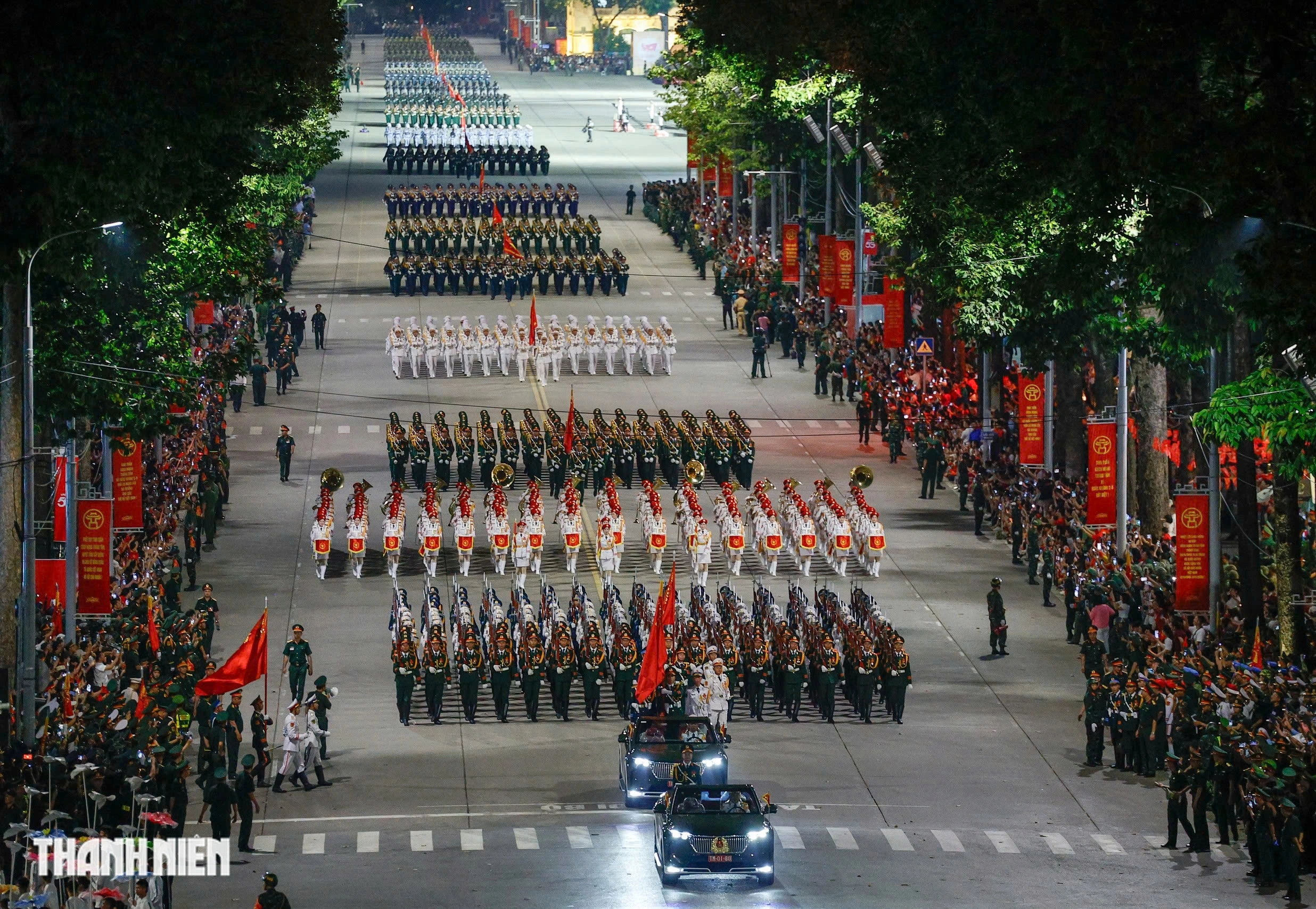
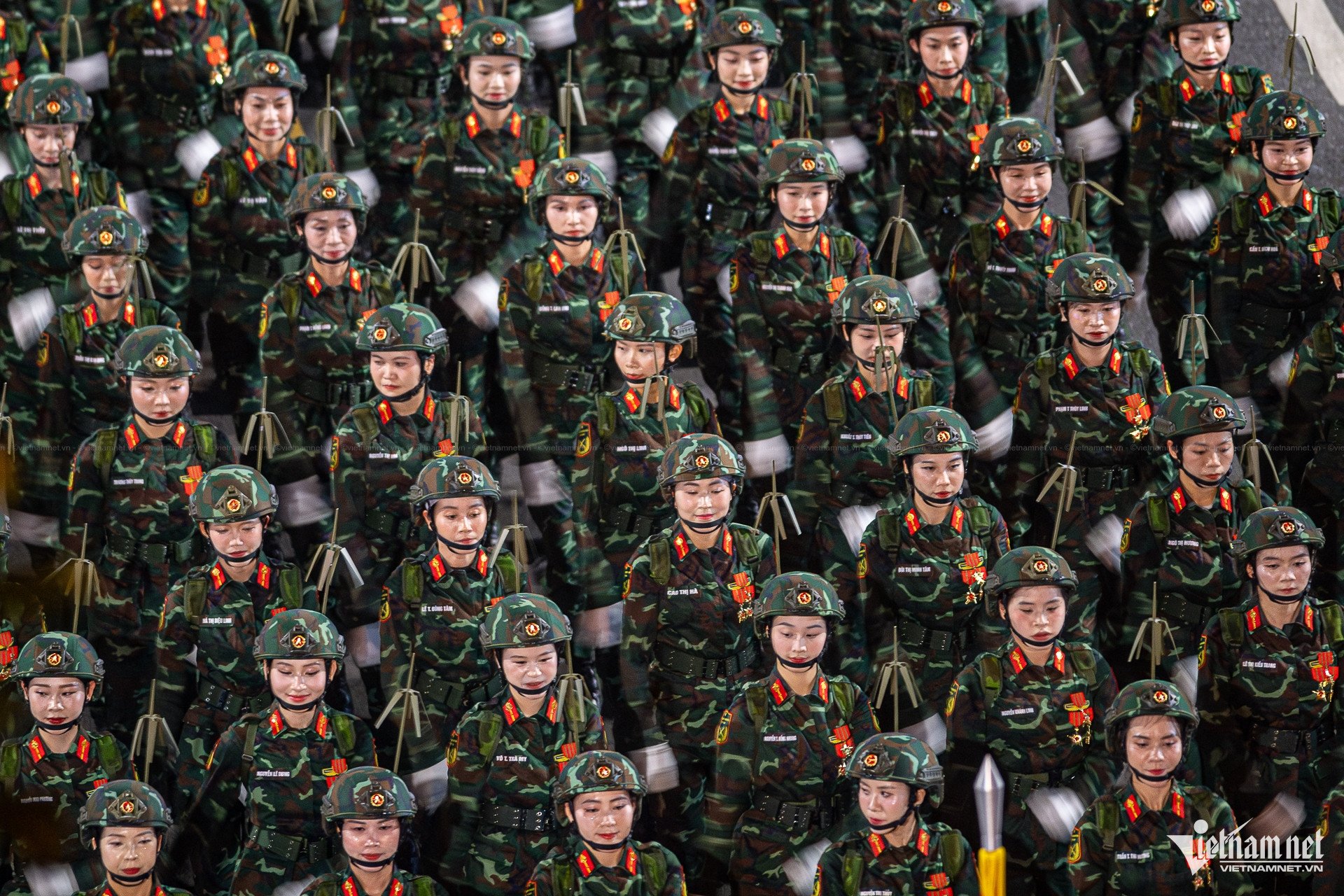
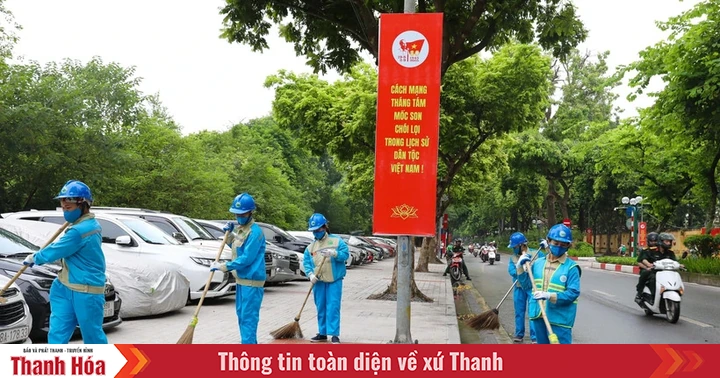

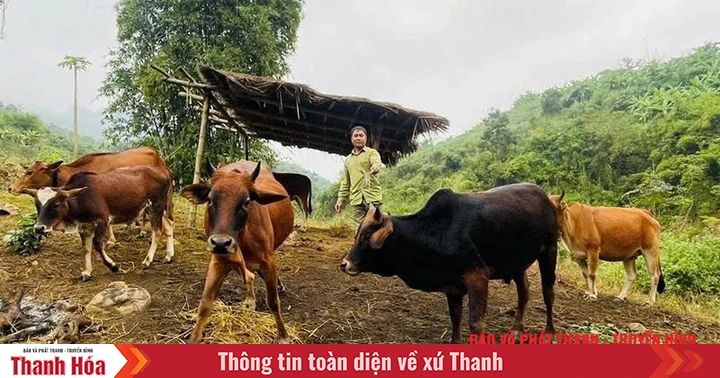
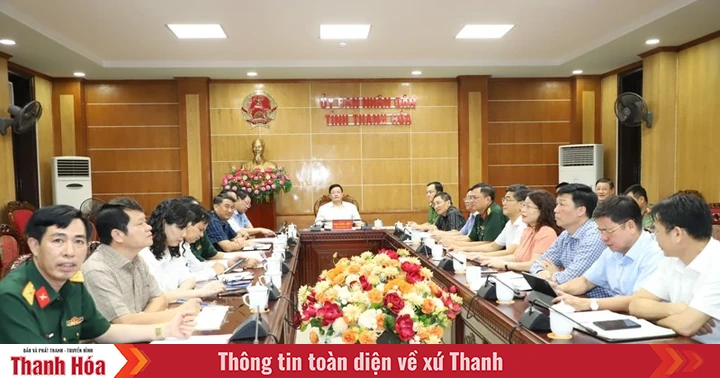

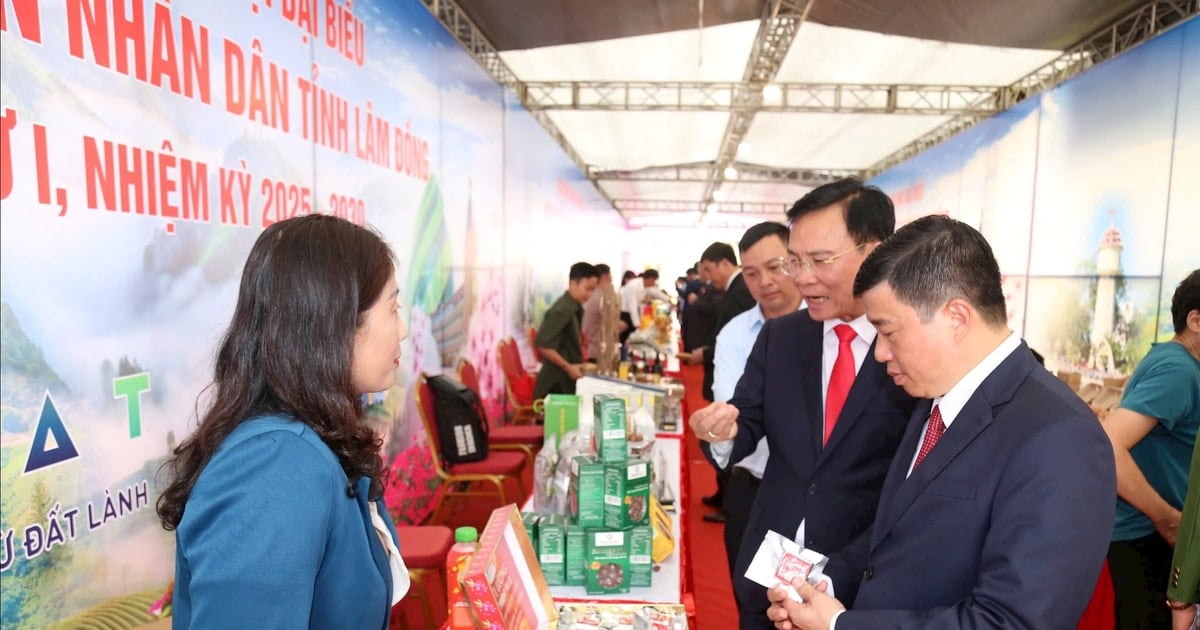

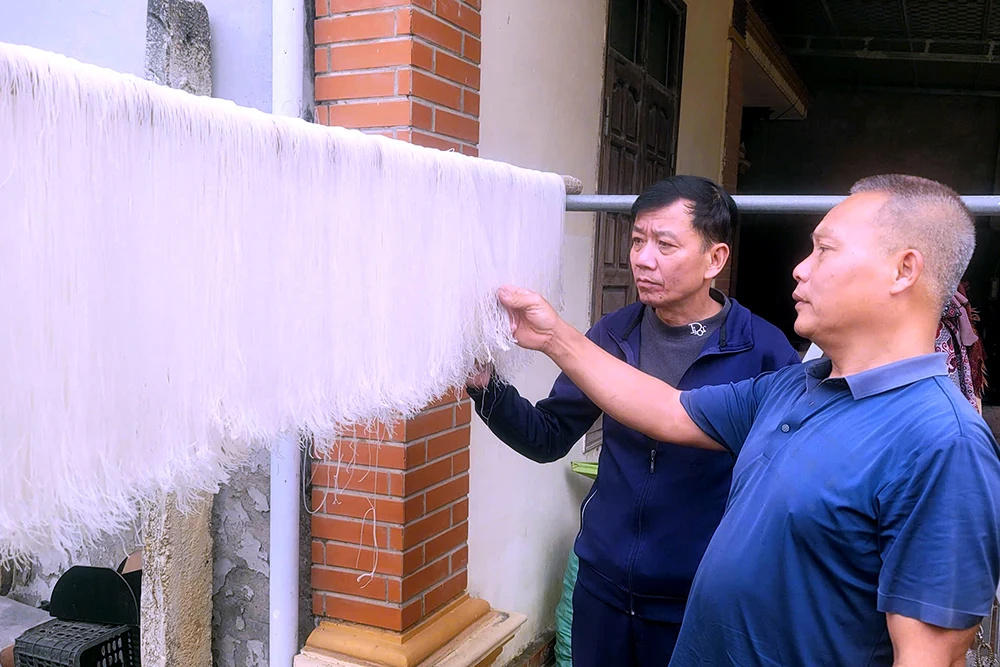

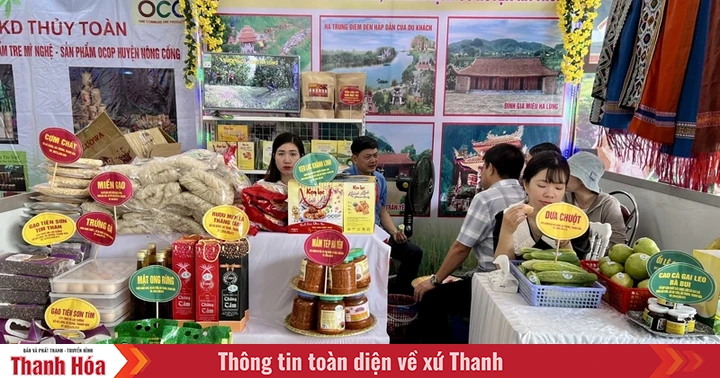
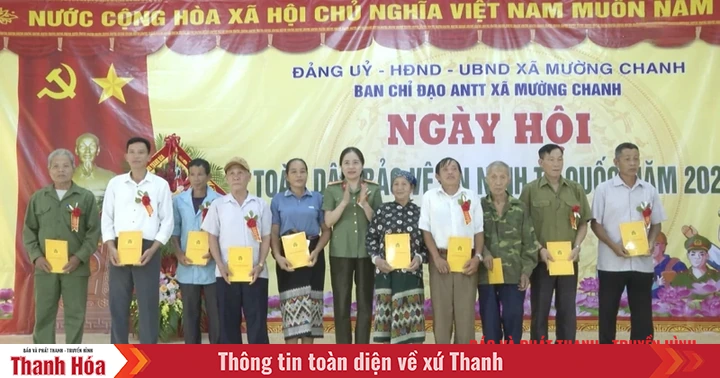
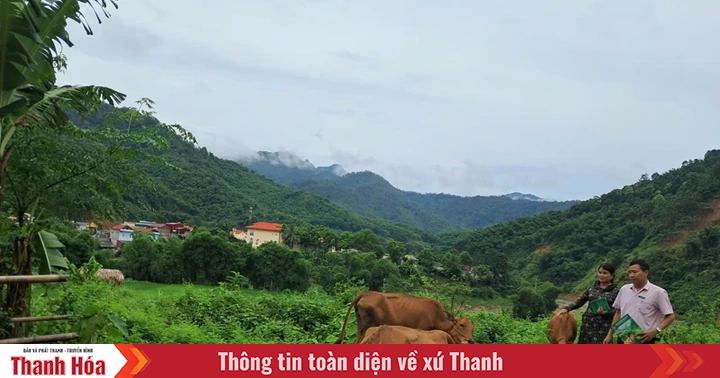
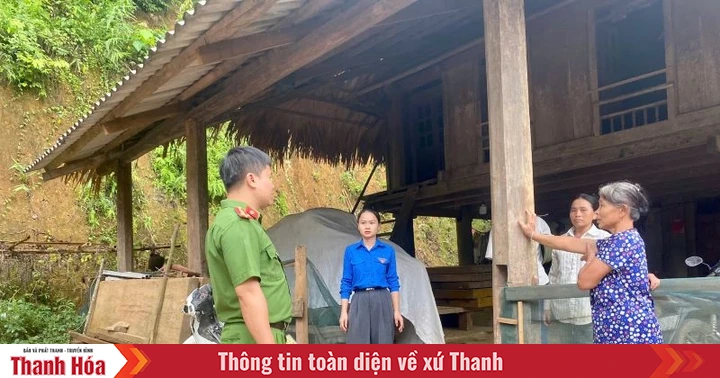






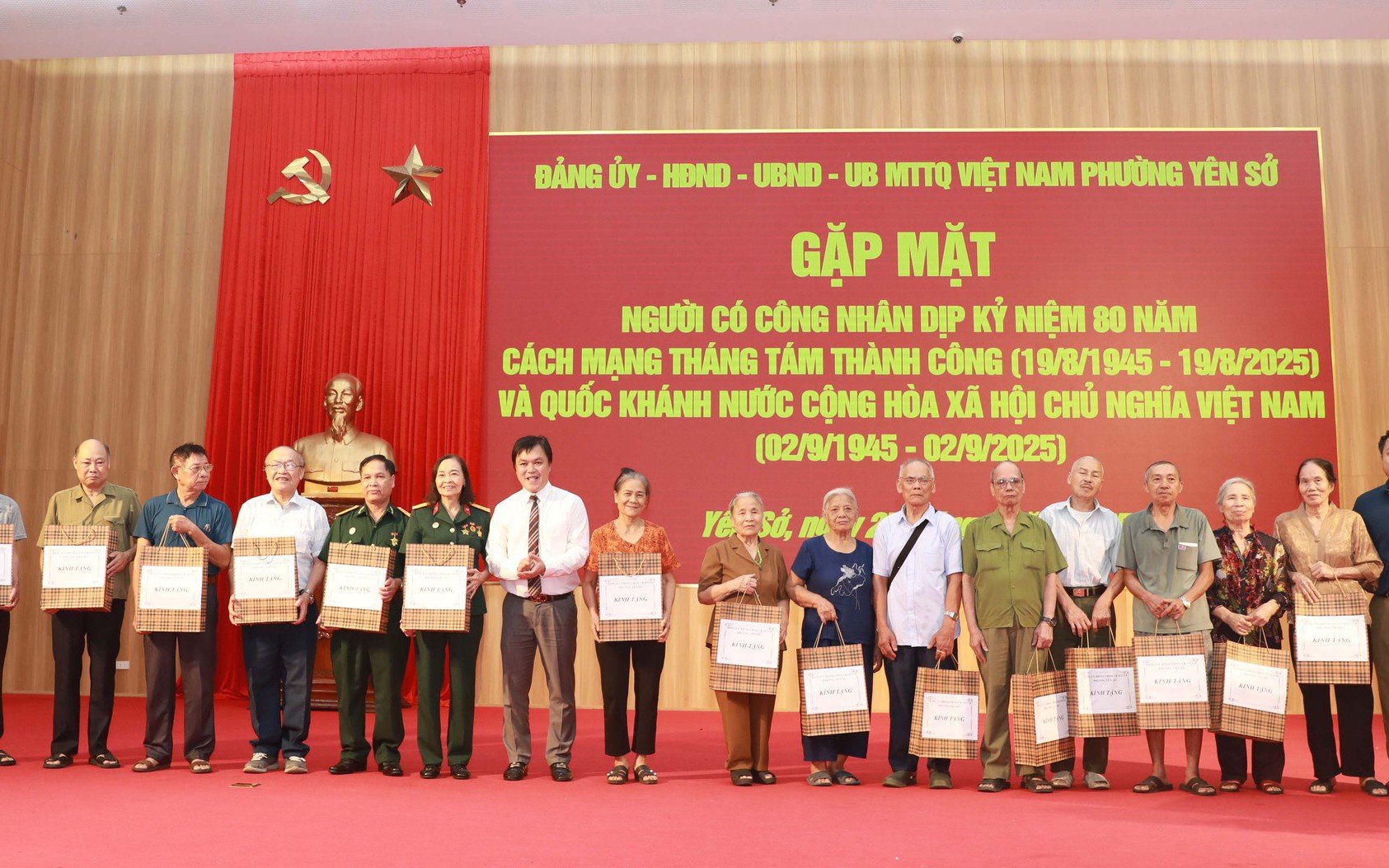
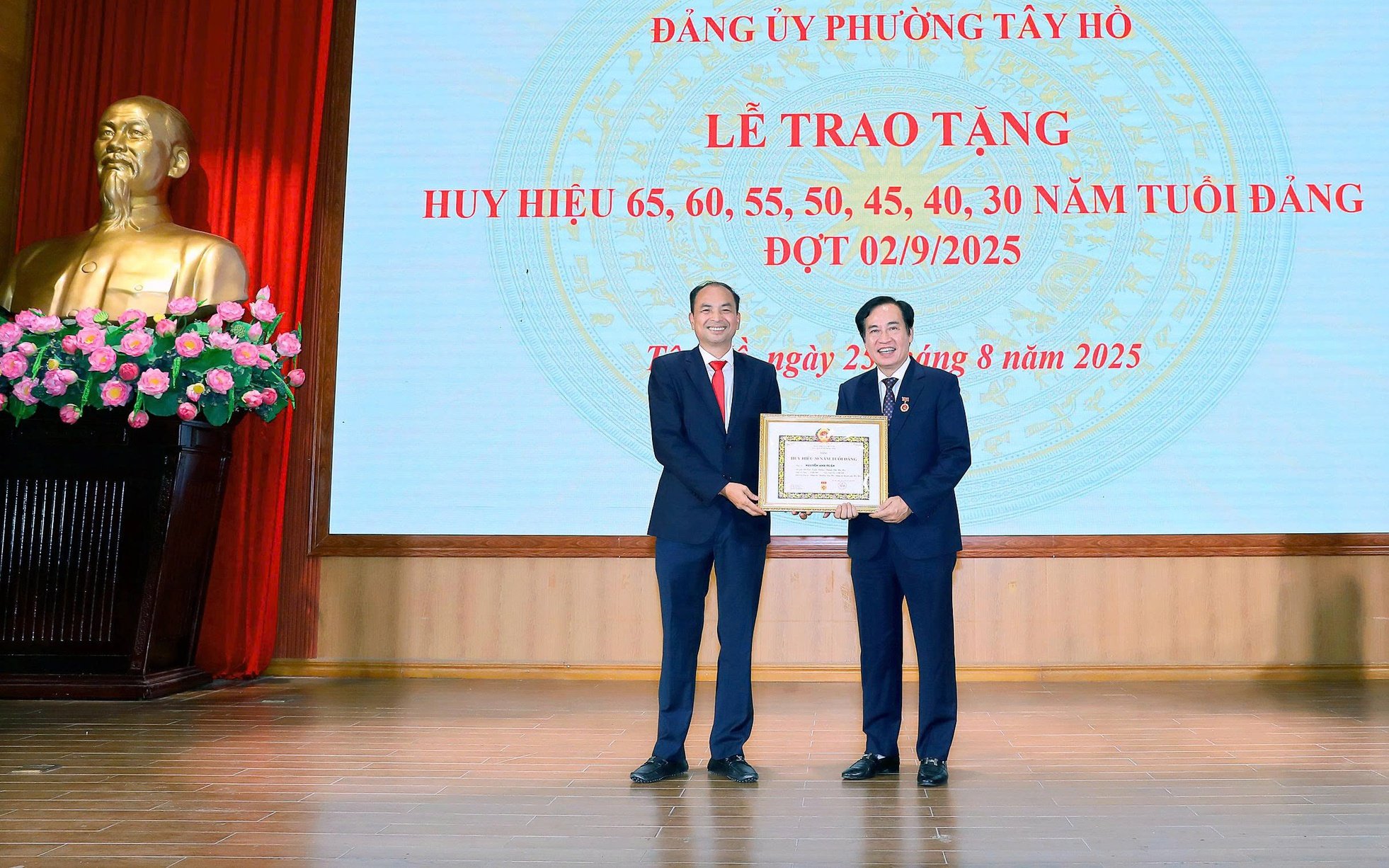
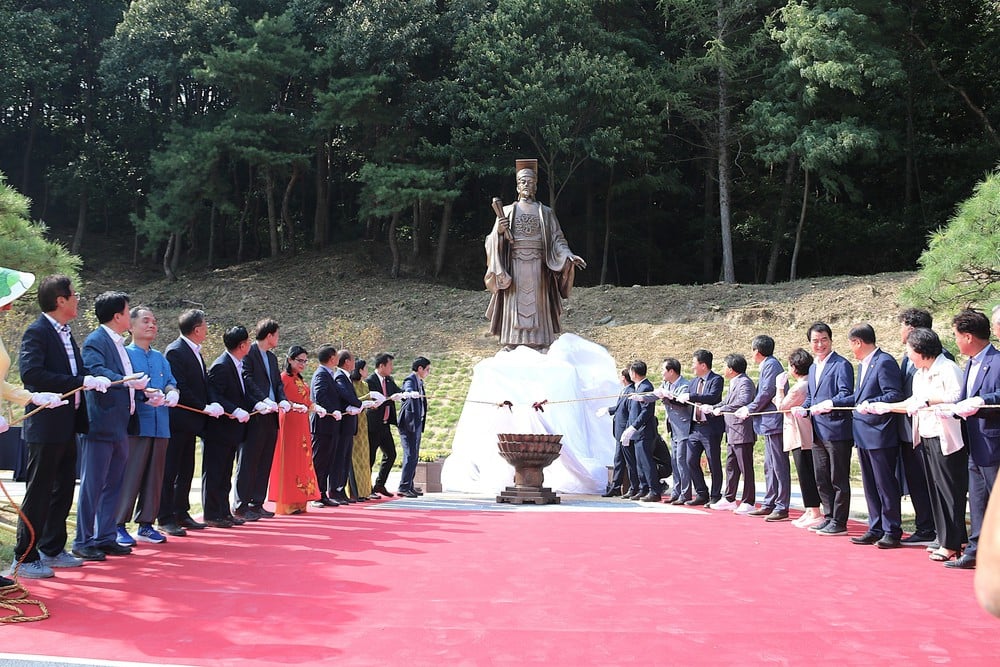

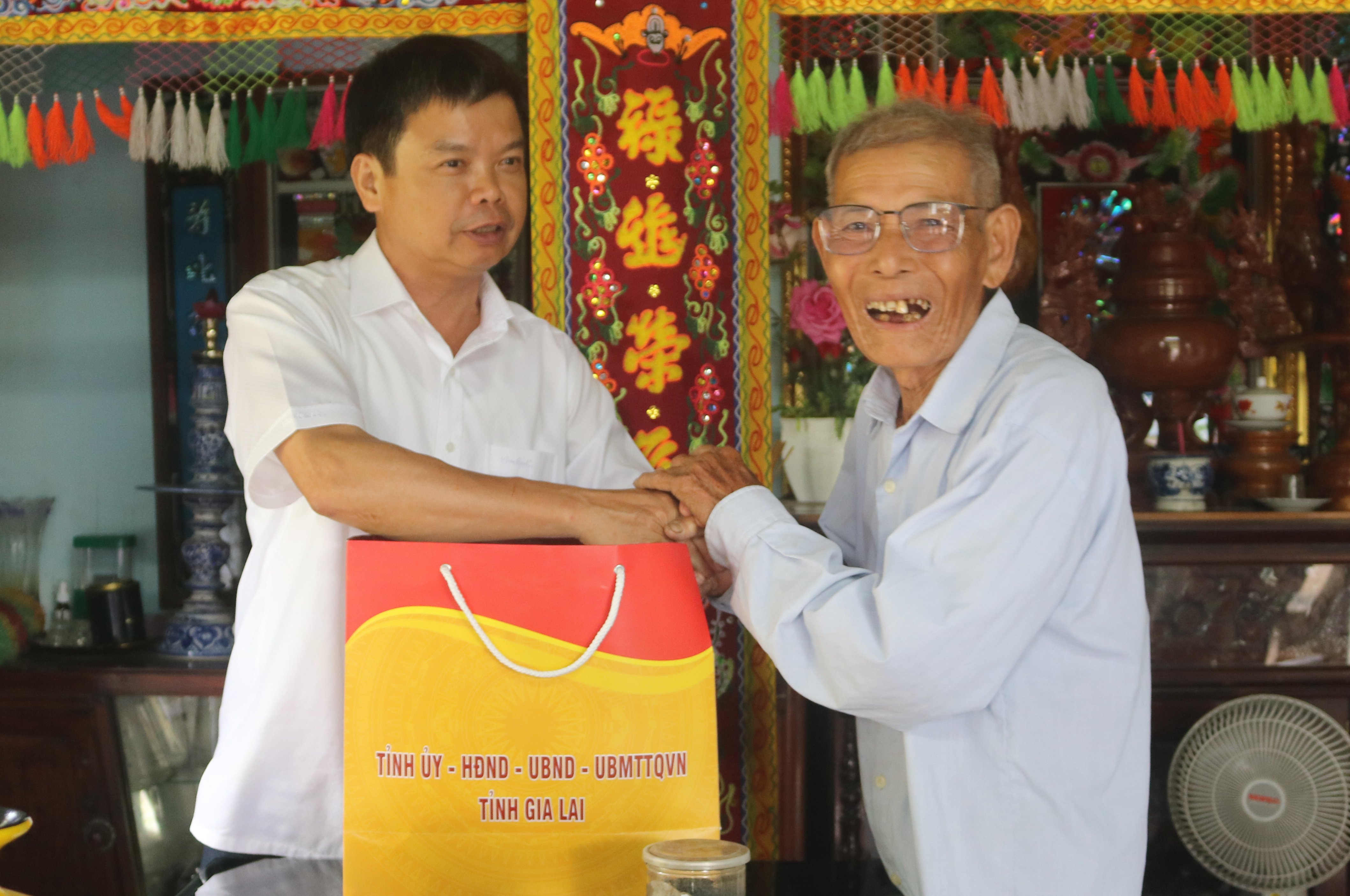
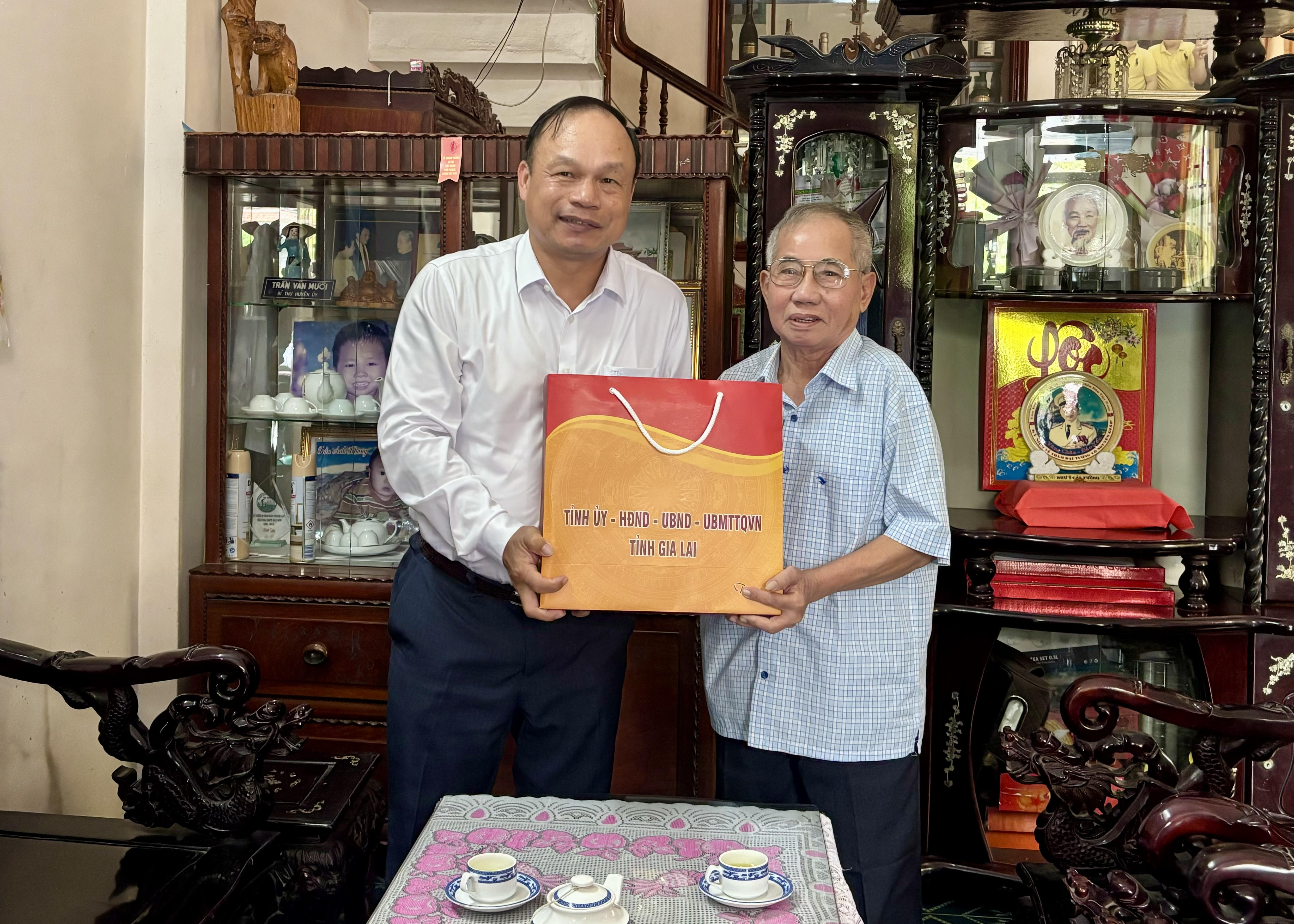


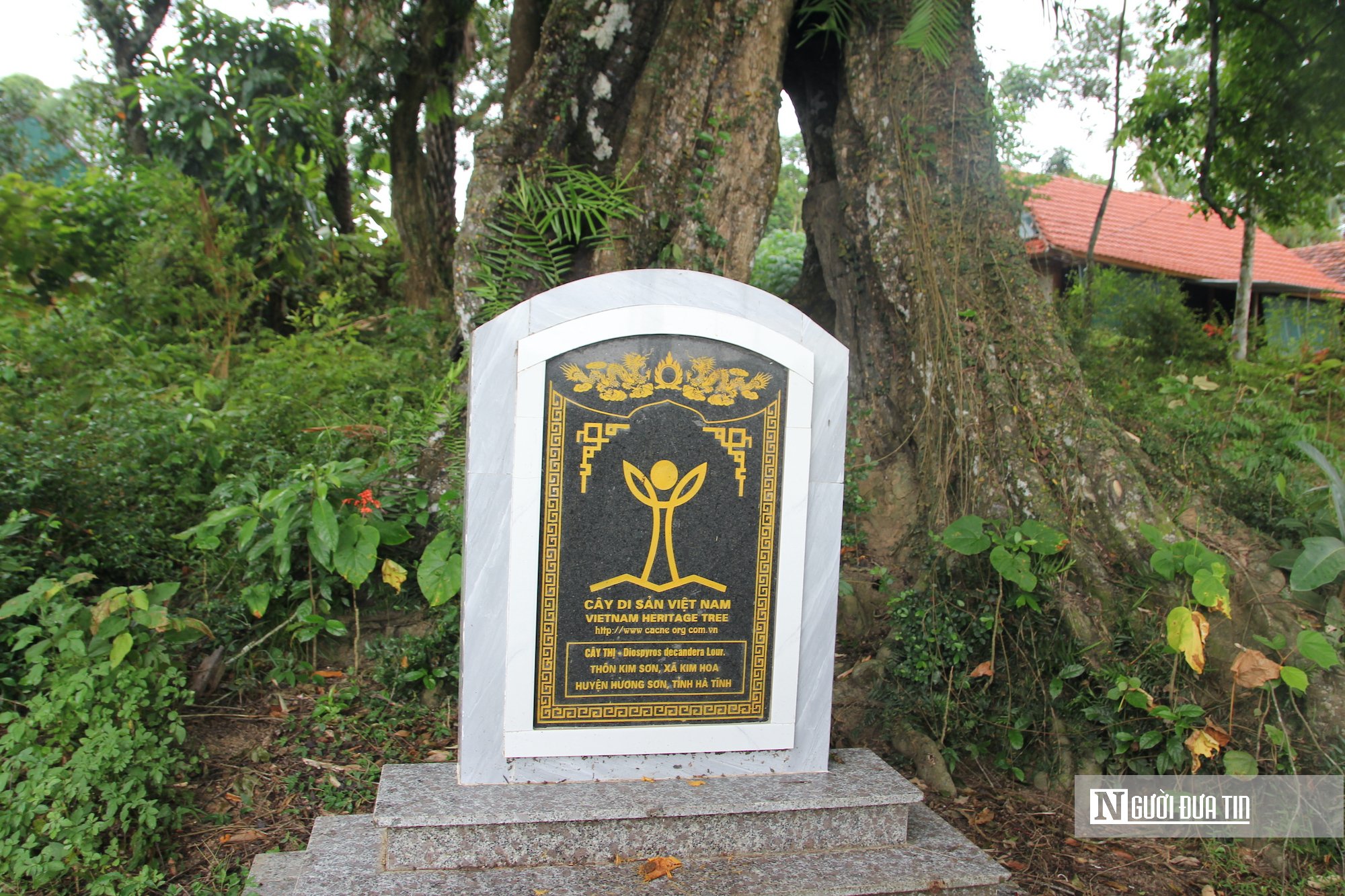



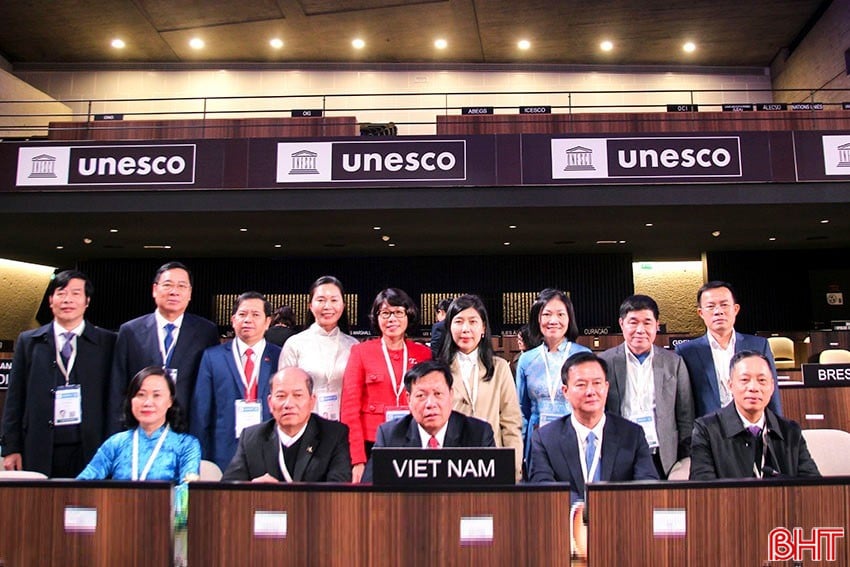

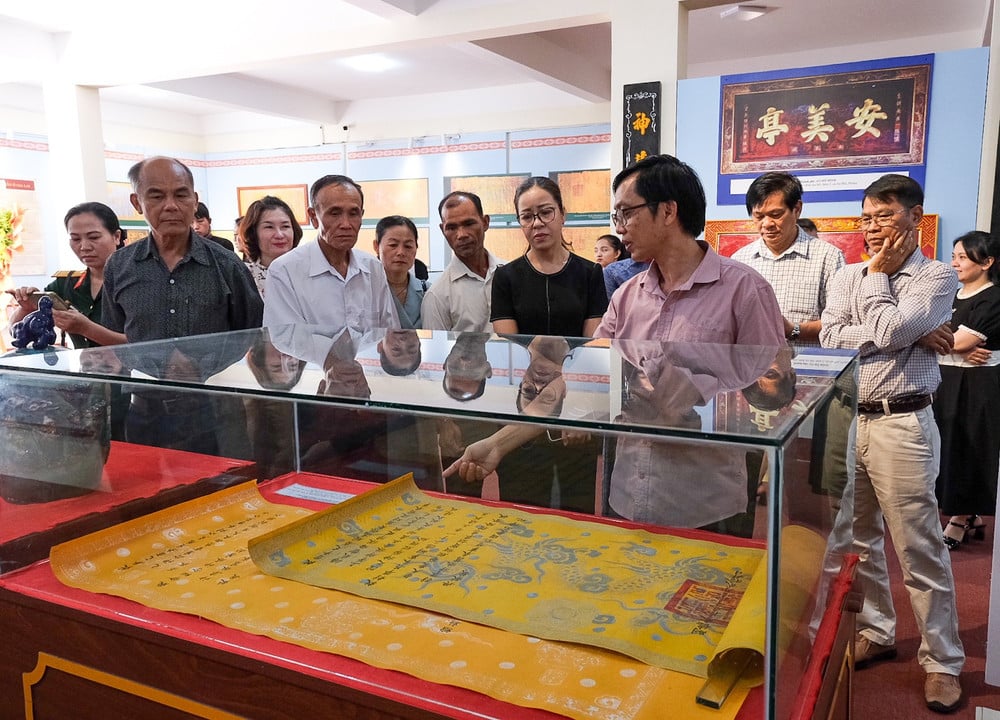











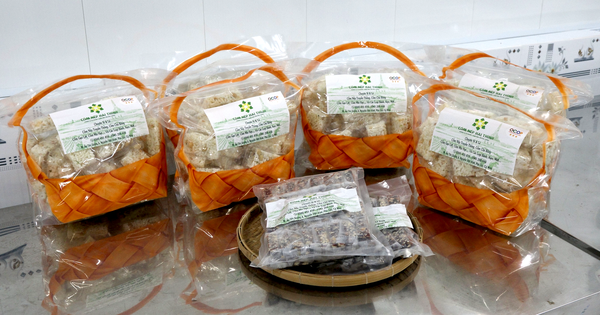

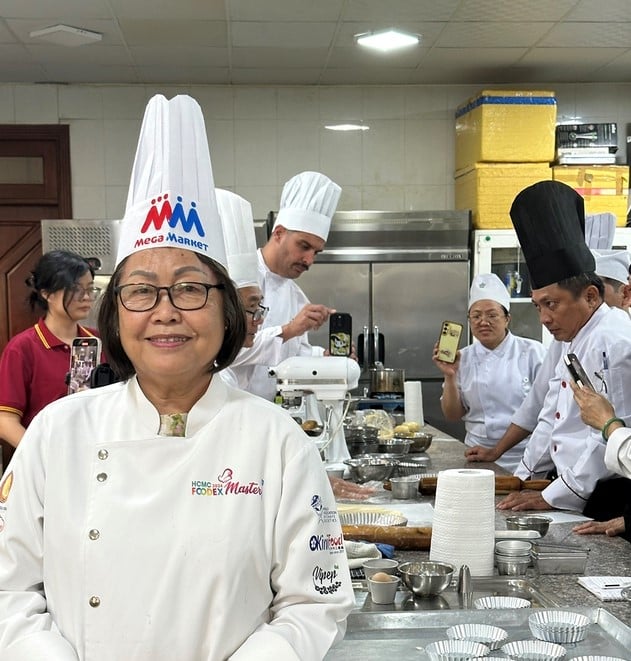
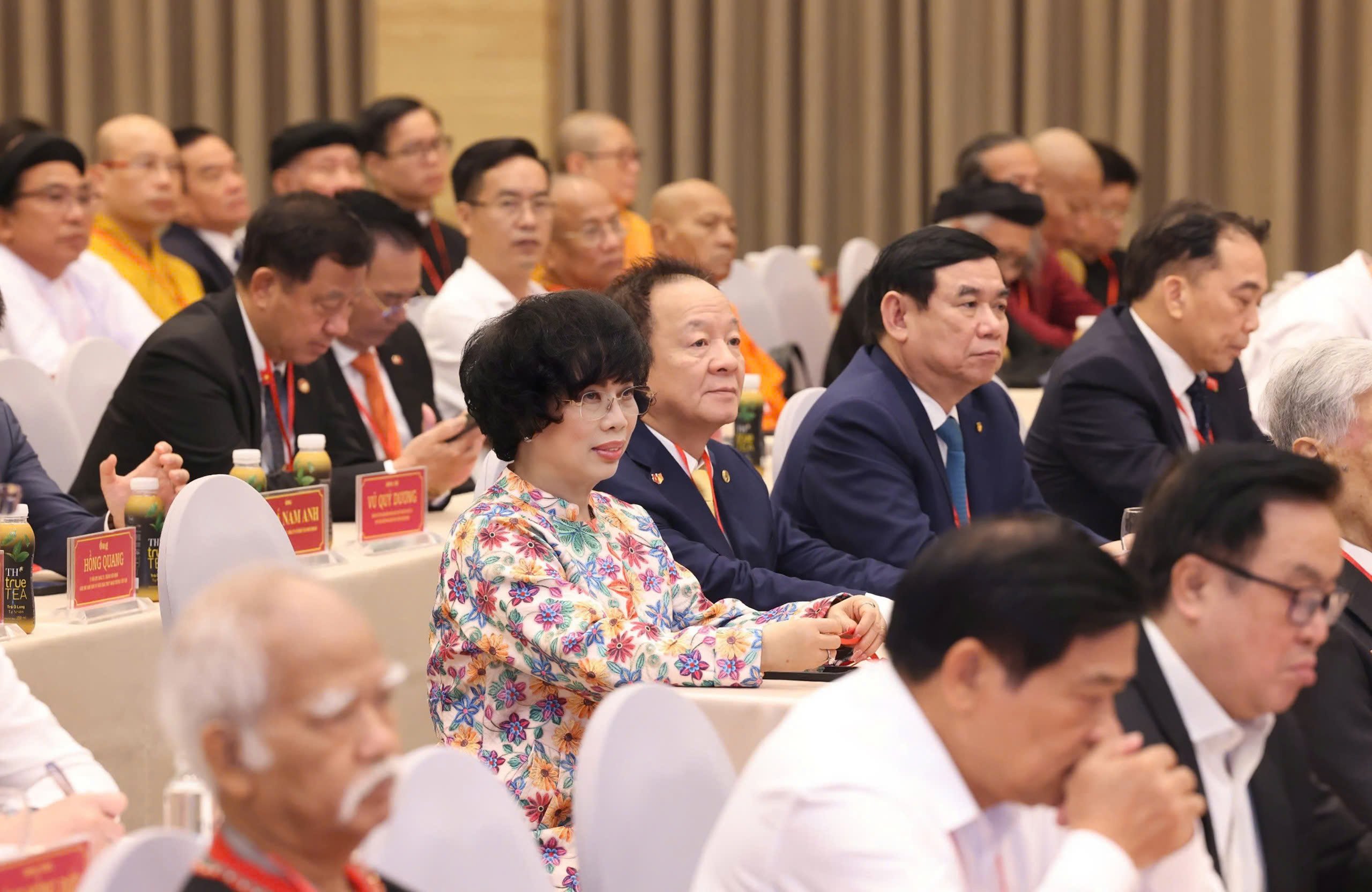
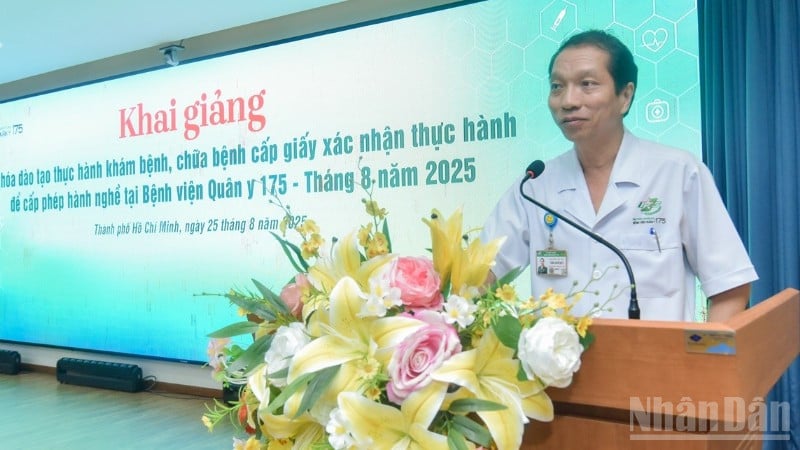

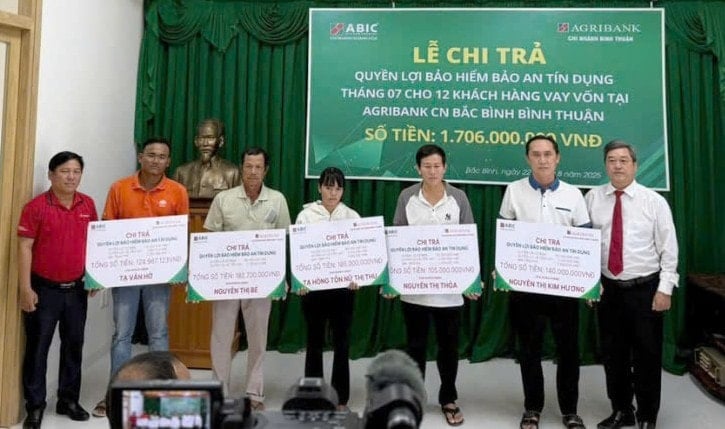







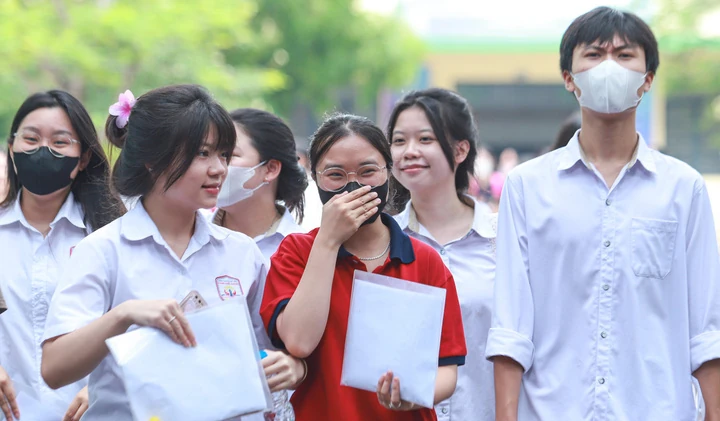


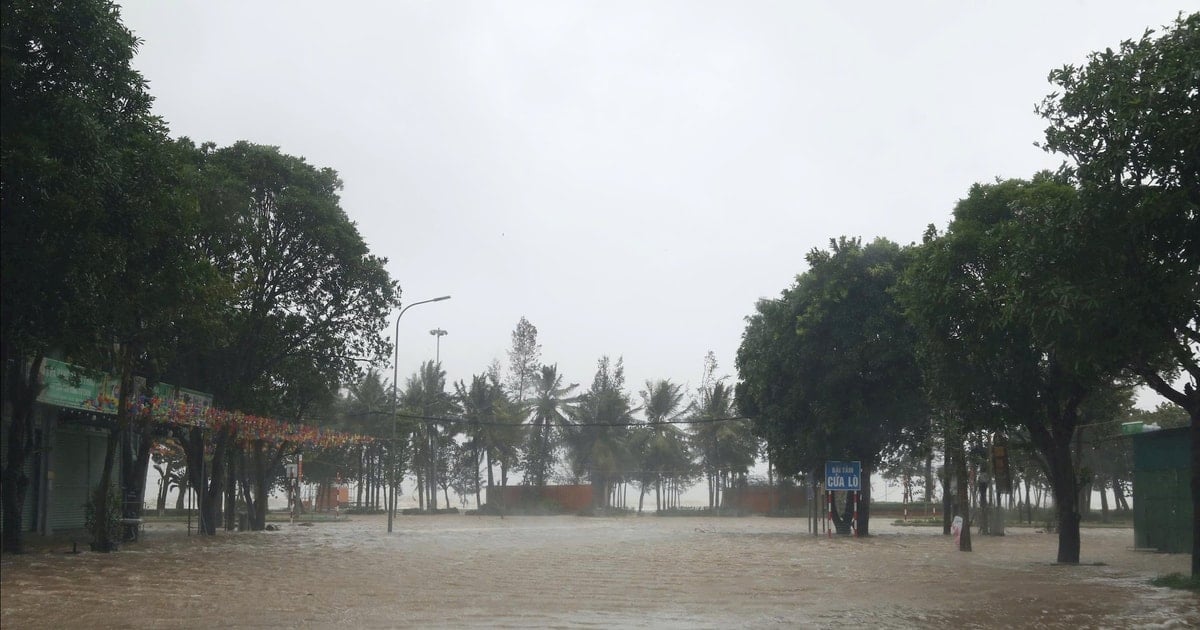



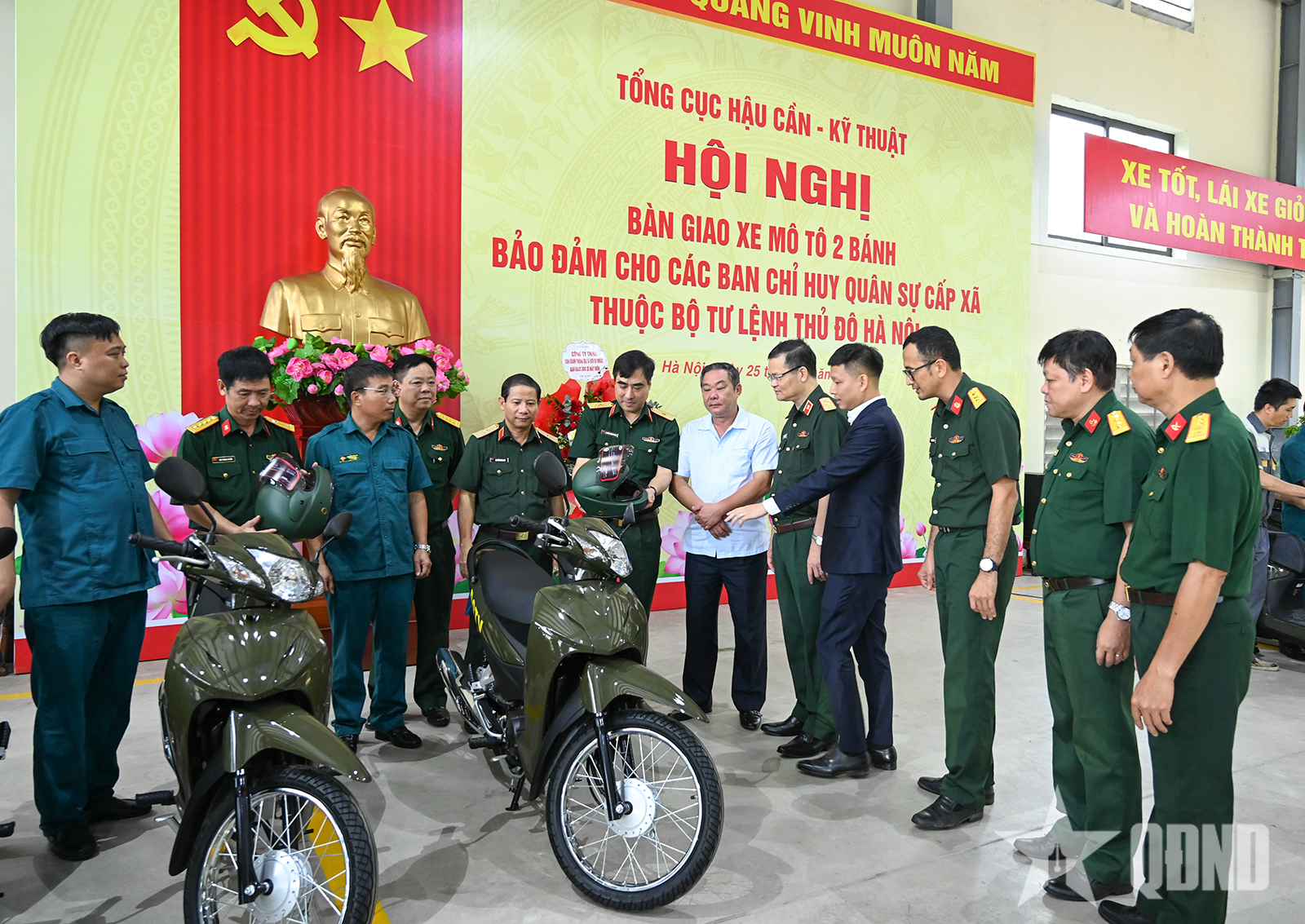
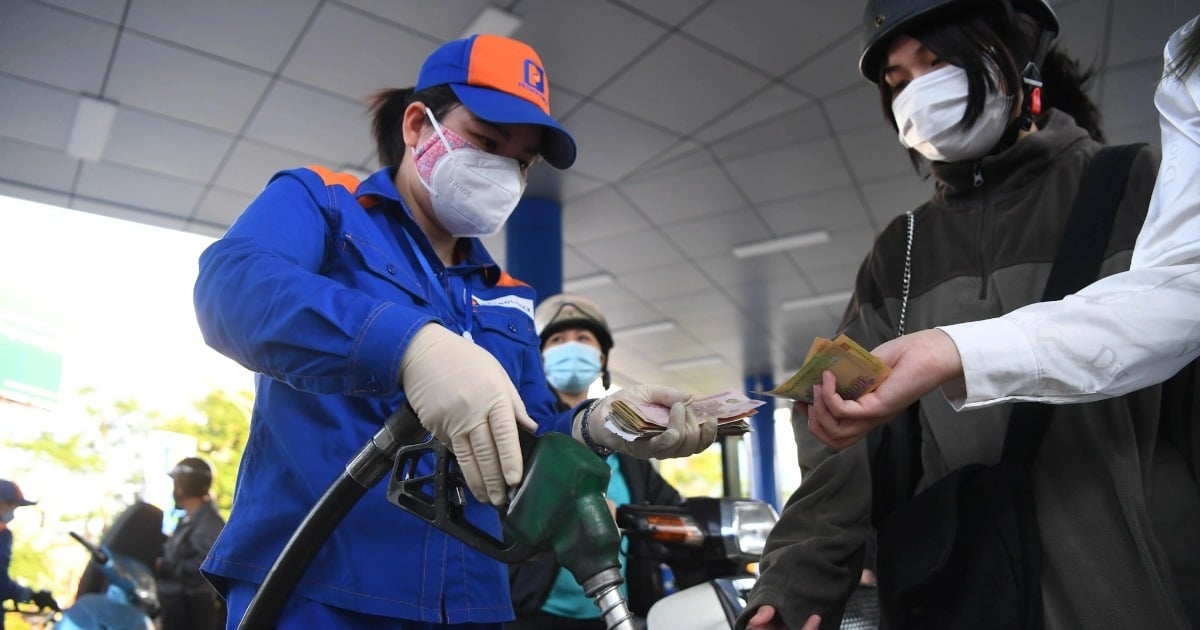



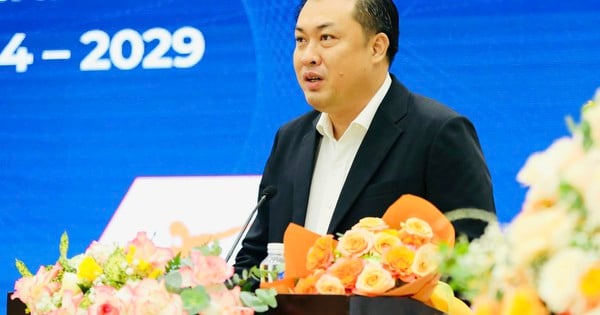

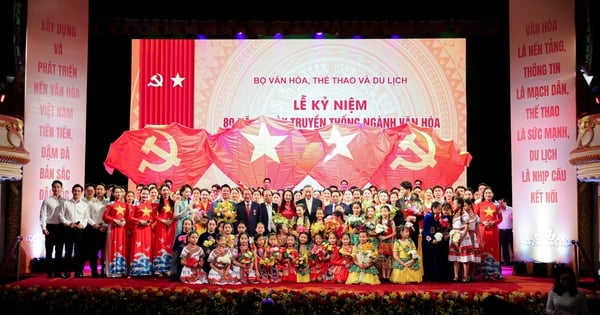
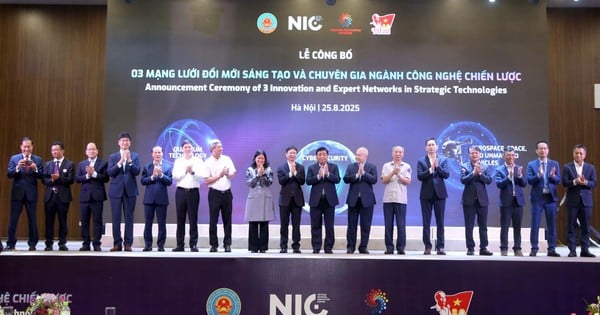

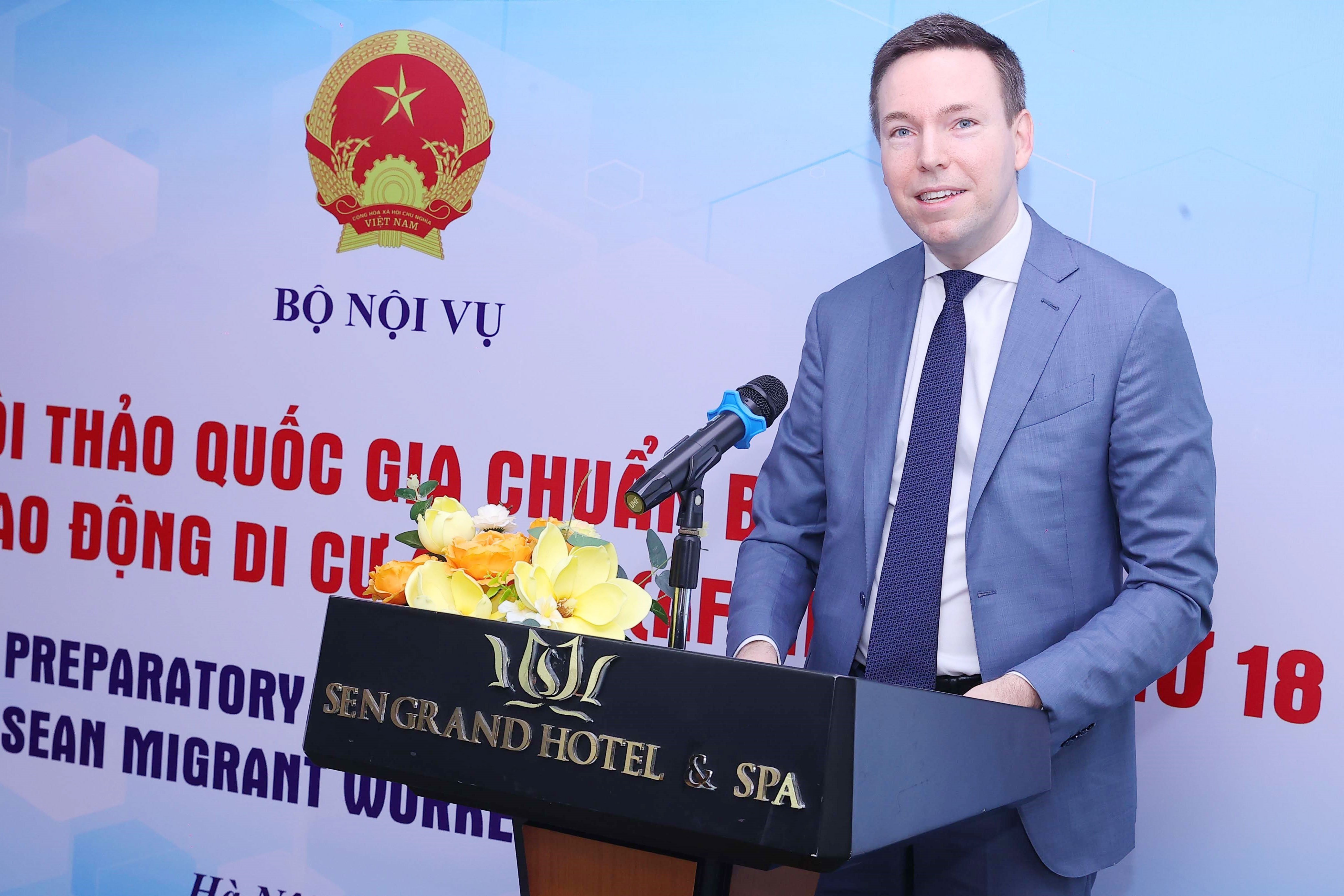




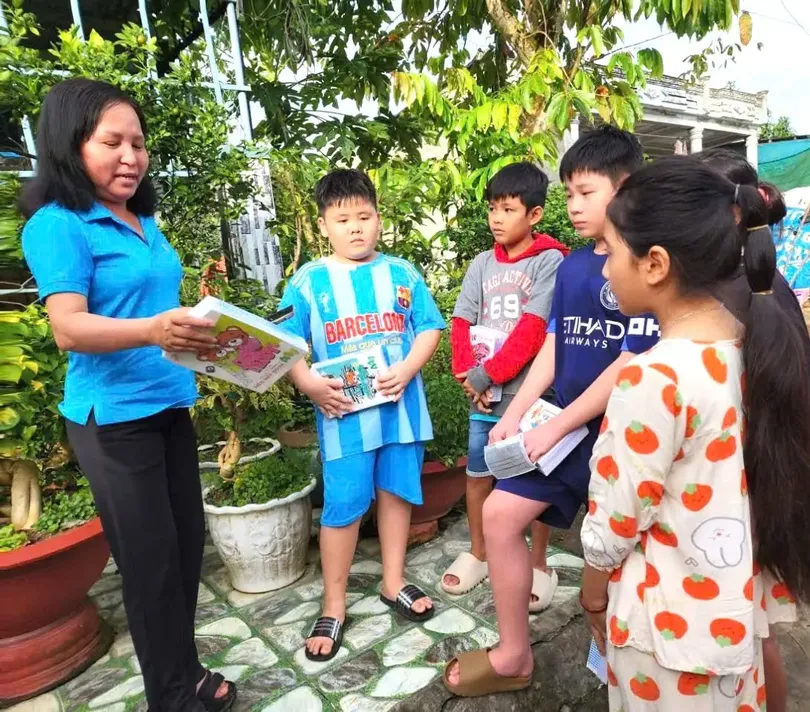

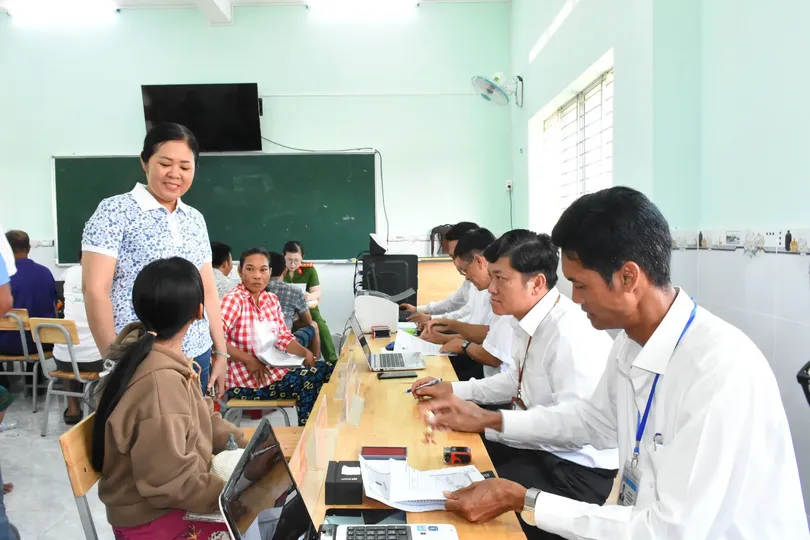
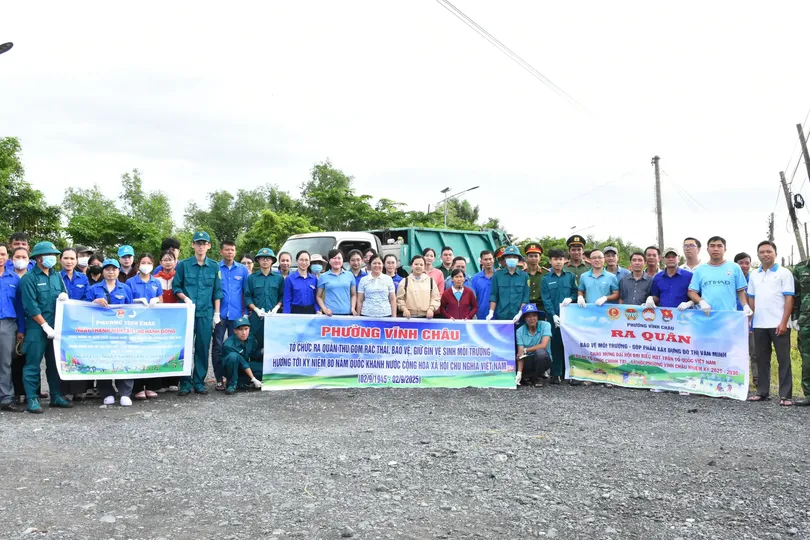



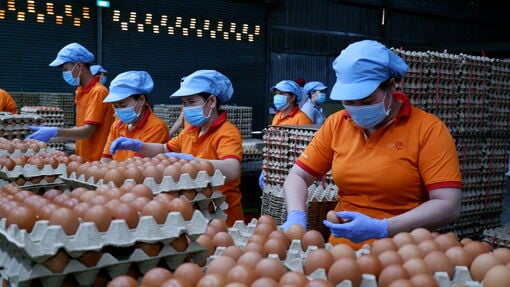

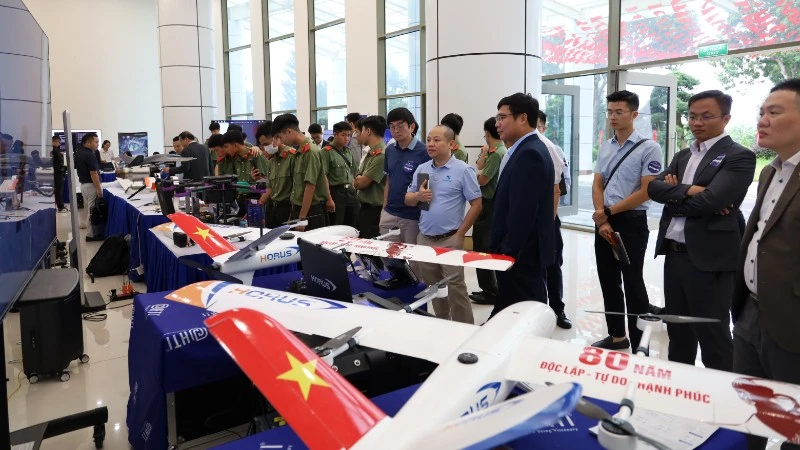


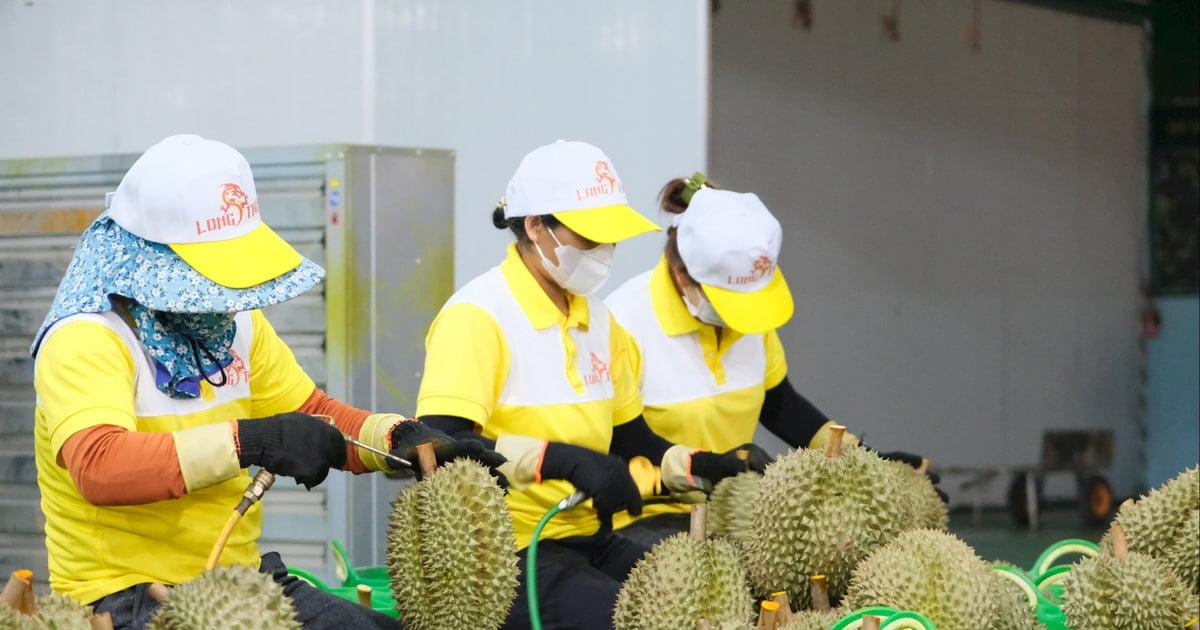





Comment (0)